#Nordic Light Region
Explore tagged Tumblr posts
Text

As you can see I've entered my Genshin era - I wonder when it'll end
In brief, I just wanted to do some warm-up before starting a big art (I hope it'll happen one day...) and show my headcanons just for fun, why not? And ofc I do not impose anything on anyone, this is just my personal opinion and blah-blah
I find Genshin char design quite entertaining. I like the devs try to rethink and use some national stereotypes, folk costumes, some ethnic motifs etc, but absolutely the same blank faces for all characters regardless of their sex and age are just killing me. So that's why I decided to diversify it a little, to estimate possible ethnic and individual differences (yes, all the nations in Genshin are fictional etc, but in fact all the national and historical prototypes seem to be quite obvious). OK LET'S GOO
Tortellini. First of all, I'm sure freckles really suit gingers. Dimples can also add some character to the image of a naive fool and a positive dude (although Tort isn't actually stupid, he's a straightforward simpleton 'cos of his young age - this fact is stated directly in the game, e.g. in Arle's dialogues). Speaking about the general features of the face, I should note the more pronounced angles of the jaw and brow ridges, thicker eyebrows, thicker neck, slightly larger chin - features that correspond to a more realistic facial structure and the difference between a male and a female face. Regarding the nose, the situation is a bit ambiguous: on the one hand, a curved nose is usually considered more Southern European or West Asian (including Arabic and Persian regions) but I once found information about two subtypes of curved noses a long time ago. Like, if the nose is curved in the upper part closer to the bridge of the nose, then this is usually the Asian type, if it's curved in the lower part closer to the tip, then it's usually European. Considering that I've met guys on the street with the latter type of a curved nose (which is also raised up) and their appearance corresponded to the "Nordic" type (light straight hair, light eyes, pale skin of a cold shade), let's assume that this is still a Northern European nose and everything is logical
Signora. Her facial features are slightly softer. She has a usual straight narrow nose. Her appearance is close to the type of a femme fatale, she is suited by slightly defined cheekbones and plump lips (I have nothing against symmetrical round "bow" lips which are trendy today, but I just prefer classic ones with a pronounced cleavage in the middle). Her head is proudly raised. Moles can complement the image: a mole under the eye can add some sophistication and elegance, while the one above the upper lip can add a bit of sensuality (for example, look at the photo of Nika Turbina - her story raises many questions, but her appearance is definitely memorable). In other words, quoting The Twelve Chairs by Ilf and Petrov, Rosaline is "a sultry woman, a poet's dream" :)
Dottore. On the one hand, his color palette gives the impression of albinism (although albinos among humans, unlike animals, practically do not have red eyes, but let's forget about it). On the other hand, his Sumeru origin directly asks to add something appropriate, so I decided to choose a hooked nose (yes, I love noses, the most diverse and memorable part of the face). His character and his actions are conducive to introducing a bit of "monstrosity" into the image: sharp facial features and teeth, withered thin lips, a greenish tint in the palette. Well, it turns out he's a true gremlin. I like the widespread headcanon about him having scars, why not - in general, the guy could both earn one in the process of experiments and receive it from his fellow countrymen. I decided to make him stoop a little, but this is a dangerous move. I mean the Doctor is bursting with aggression, determination and arrogance, he is a daring and self-confident person, and such a tightness doesn't fit him. However, his obsession with scientific research, poring over books and constant work on experiments can (probably) cause a curvature of posture. In the end, I decided that this man can straighten up normally if necessary, but he usually still slouches (just like my uncle :)). Or at least like Dead Space protagonist who is also stooped but still is quite a good fighter
Arlele. Here I didn't do much 'cos the developers have already given her a bunch of distinct features: crossed pupils, and black hands, and some patterns on them, and contrasting hair (although most chars have more or less monochrome or at least similar shades of their hair). In general, she's good the same as she is now. In comparison with Signora, her image is slightly more restrained and refined, her lips are slightly thinner, her eyebrows, on the contrary, are slightly thicker, and her cheekbones are less pronounced. The only major detail added is a slightly hooked, drooping nose. I don't know why, but it seems to be very French for me. Some famous French actors and actresses have kinda similar noses (e.g. Louis de Funès, Pierre Richard, Christian Clavier, Sophie Marceau, Laetitia Casta etc.) - well, at least I think so
By the way, I honestly wanted to diversify somehow emotions in my drawings, but all of the characters are smiling again - what can I do if the smiles suit these guys as well as nobody else: Tort has a half-friendly, half-self-confident smile kinda like 😼, Signora has a proud one, Arle has a cunningly condescending one, and Dottore has just a snide "ehehe"
Hooray, it's a Chinese wall of my text again - well, this time it has at least some sense
Have a nice summer everyone!! I hope to see you again before the autumn :)
P.S. hello to the old ones who has recognized the original album cover, it's been 19 years since its release, feel old yet?
46 notes
·
View notes
Text
In the early hours of Sunday, Sept. 8, a Russian drone flew into Romanian airspace during a nighttime attack on Ukraine’s Danube River ports. Romania scrambled two F-16s to monitor the situation, according to the Romanian Defense Ministry. A day earlier, an Iranian-type Shahed drone armed with explosives flew from Belarus into Latvia—which is neither close to Ukraine nor on a direct flight path—and crashed near the Latvian city of Rezekne, about 35 miles from the closest section of the Belarusian border. Throughout the war, by accident or design, Russian missiles and attack drones have repeatedly infringed the airspace of Romania, Latvia, Poland, and other NATO members —and hit the alliance’s territory.
In late August, Kyiv asked European Union and NATO ministers to start shooting down Russian missiles and drones heading toward NATO over Ukraine. At first glance, this might seem like a request for NATO to step into the firing line and become a party to the war. For the Biden administration and some allied governments, becoming a direct participant in the war against Russia has been the darkest of red lines from the moment that Western intelligence services noticed Moscow’s preparations for invading Ukraine.
Establishing an air defense shield to protect NATO’s own eastern flank, however, does not translate to NATO’s entry into the war. The escalatory risk of NATO protecting its own territory can be controlled—even while a shield to head off Russian missiles and drones would have the secondary effect of providing parts of western Ukraine with much-needed air cover. Ultimately, a firm decision by NATO to act against repeated breaches of its airspace is likely to be de-escalatory. That’s because the real risk lies in letting Russia continue to test Western decision-making—and for the Kremlin to believe that it will meet no resistance when it escalates.
Ground-based air defense from various NATO member states—including Britain, France, the Nordic countries, the Netherlands, the Czech Republic, and other willing allies—could be deployed on the territory of Poland, Slovakia, and Romania at strategic locations along their borders with Ukraine. Allied aircraft operating in NATO airspace could also be used. The bloc would operate the shield entirely from allied territory and airspace, no weapons or troops would be placed inside Ukraine, and NATO aircraft would not enter Ukrainian airspace. The primary purpose of the air defense shield would be to prevent Russian attack drones and missiles from entering NATO airspace and hitting objects on the alliance’s territory.
Such an operation could be carried out on a bilateral basis or by a coalition of the willing. And it would not be a NATO-wide operation, given that Hungary would likely block any action by the alliance.
There have been regular instances of Russia breaching NATO airspace since the start of the invasion. Some of these incursions may well be accidental. In the first weeks of the invasion, a drone carrying explosives flew unhindered through Romanian and Hungarian airspace until it crashed next to a student dormitory in the outskirts of the Croatian capital Zagreb. In November 2022, a S-300 air-defense missile, possibly fired from Ukraine at a Russian target, went astray and killed two farmers in Poland.
But other instances do not seem so accidental. In March, a Russian missile—whose target and flight path were preprogrammed—spent 39 seconds traveling through Polish airspace before reentering Ukraine. Especially in light of deliberate Russian incursions in the Baltic Sea region and elsewhere, some of these incidents seem to be part of a systematic attempt by Russia to test NATO’s resolve and decision-making process.
This probing is dangerous and comes with a high risk of escalation. Not only could it lead to a Russian drone or missile hitting NATO territory and potentially killing civilians, but NATO would also then have to decide whether to respond to such an attack—including whether to invoke Article 5, the collective defense clause that requires the alliance to defend its members. The more that Russia probes without any NATO response, the greater the risk of an incident that would trigger Article 5.
An air defense shield to protect NATO would be a clear response to that Russian probing, with the welcome secondary effect of helping Ukraine. It would signal a more serious posture by Ukraine’s supporters and show that they are willing to regain the strategic initiative rather than merely reacting to events and drawing no red lines for Russia.
For Ukraine, the shield could help provide a degree of security along a corridor running along its western border, where drones and missiles would be engaged by the shield lest they cross into NATO territory. The depth of this corridor would depend on the types and number of air defense assets deployed. It would reduce or eliminate attacks on Ukrainian cities and critical infrastructure close to the border, such as the Danube ports and various electricity substations, transmission lines, and gas storage facilities.
It would also mean greater security for Ukrainian businesses and factories operating within the corridor, as well as a degree of humanitarian protection for civilians and civilian infrastructure, such as hospitals. Parts of Moldova, which is not in NATO, would fall within the corridor as well. The shield would not provide perfect protection everywhere, but it would certainly contribute more than what exists today.
A NATO air defense shield along the alliance’s eastern flank would also enable Ukraine to move some of its air defense systems from its western border closer to the front and the cities in the east, such as Dnipro and Poltava. This would strengthen Ukrainian air defense without additional systems leaving the armories of its Western allies.
The main objection to the air defense shield has been that it would prove to be escalatory by drawing NATO into direct confrontation with Russia. By shooting down Russian drones and missiles flying over Ukraine, the argument goes, NATO would become a party to the conflict and invite military retaliation by Russia, setting off a cataclysmic Russia-NATO war.
The opposite, however, is more likely to be true.
First, enforcing an air defense shield would not mean shooting down Russian fighter jets and killing Russian pilots. Russia does not fly crewed aircraft in western Ukraine precisely because of the high risk of Ukrainians shooting them down. Hence, the shield would only target uncrewed drones and missiles. For all its huffing and puffing, Moscow would be hard-pressed to make a credible case for retaliation against a country exercising its right of self-defense to shoot down a missile entering its airspace or heading in its direction.
Indeed, one could make a compelling case that NATO border states have an obligation to protect their citizens. Polish Foreign Minister Radoslaw Sikorski has stated that his and other countries have a duty to intercept Russian missiles before they enter NATO territory.
Second, an air defense shield would aim to prevent Russian missiles and drones from striking inside the territory of a NATO ally, which could trigger the Article 5 mutual defense clause. In this sense, the shield would actually be de-escalatory in averting a possible Article 5-level crisis that could quickly spiral out of control. Russia’s ability to routinely breach NATO airspace without a reaction weakens the bloc’s deterrence and raises the likelihood that Russia will probe and provoke further.
Ukraine’s partners, most notably the United States and Germany, have imposed strict caveats on Ukraine’s use of Western weapons—even including those delivered by Britain or other Western partners—and shown considerable restraint in their support for Ukraine. In their view, this cautious approach prevents escalation. But the effect has been the opposite: Not standing firm and pushing back has been an invitation for Russia to prod, provoke, and raise the stakes. Paradoxically, restraint comes with a high risk of escalation.
In showing that it will continue to push against the West if unobstructed, the Kremlin is staying true to Soviet leader Vladimir Lenin’s famous strategic adage: “You probe with bayonets: If you find mush, you push. If you find steel, you withdraw.” An air defense shield on NATO’s eastern border could provide that steel.
Would Russia retaliate against a NATO ally for intercepting a drone or missile that might strike its territory? This is highly unlikely. Russian President Vladimir Putin has repeatedly shown that he takes Article 5 seriously, and a retaliatory strike against a NATO ally could draw in the entire alliance. He will not risk wider hostilities with NATO that he knows Russia would lose.
Putin would no doubt threaten retaliation and escalation, just as he did to try to stop the West from delivering tanks, missiles, and fighter jets to Ukraine. In each case, when allies finally provided the weapons, Putin’s threats proved hollow. Strangely, Western leaders still seem not to recognize how Putin uses threats to influence Western decision-making into the direction of restraint, self-deterrence, and an overabundance of caution.
Just like in Lenin’s adage, Russia often retreats when met with force. Take the case of the Russian Black Sea Fleet: After Ukraine managed to destroy one-third of the fleet, including its flagship, the battlecruiser Moskva, Russia responded by pulling back the surviving fleet from Crimea to get out of range, rather than step up its attacks. When faced with the choice between retaliation and retreat, Russia chose retreat. Similarly, following Ukraine’s incursion into Kursk—the first foreign occupation of Russia since World War II—Putin chose to play down the incursion’s importance rather than escalate.
When the history books are written about this war, a key lesson will likely be that the seemingly prudent but overly cautious approach by the West was a signal to Russia to start and expand its war. Much of what appeared de-escalatory on the part of the West was in fact escalatory, leading to a more brutal and longer war. And much of what appeared escalatory—such as Ukraine’s attacks on the Russian Black Sea Fleet, including with Western-provided missiles��was in fact de-escalatory.
Until decision-makers in Washington and Berlin understand this, Moscow will be pushing and probing where it can to test NATO’s resolve.
Throughout this war, the West has imposed red lines on itself. Putin has repeatedly threatened escalation and retaliation, but when tested, those threats and red lines have proved illusory. Providing an air defense shield operating from NATO territory would strengthen the alliance’s deterrence, help Ukraine, and lower the risk of escalation. It is time for Western allies to retake the strategic initiative and call Putin’s bluff.
18 notes
·
View notes
Note
Im curious if FMC is a fae. Would she have wings like other fae depictions ???
Traditionally, faeries are depicted with a wide variety of features.
Accounts of their appearance greatly vary depending on the region the beliefs have come from.
Keep in mind Irish, Scandinavian, Nordic and Celtic folklore may have common roots but they are all very different.
And in some instances the word 'Fae' can be used interchangeably with the word 'Elf' and/or as an umbrella term used to refer to a group of species belonging to the same family (the same way tigers, lions, and house cats are all objectively different but are also all felines).
-> For example, there are The Huldufólk or The Hidden People who are a race of elves that originate from Icelandic/Faroese Folklore. They behave much like humans and bear a strong resemblance to us, but they are also noteworthy for their natural ability to make themselves invisible at will.
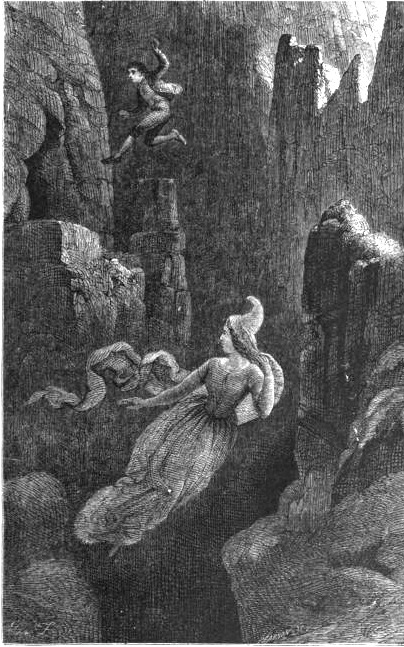
(Engraving of a man jumping after a female elf into a precipice.)
-> In traditional Norse Mythology, you have the Álfar. The Ljósálfar ("Light Elves") and the Dökkálfar ("Dark Elves") who are two contrasting types of elves; the dark elves dwell within the earth and have a dark complexion, while the light elves live in Álfheimr (Alfheim), and are "fairer than the sun to look at". They are both attested in the Prose Edda, written in the 13th century by Snorri Sturluson, and in the late Old Norse poem Hrafnagaldr Óðins.
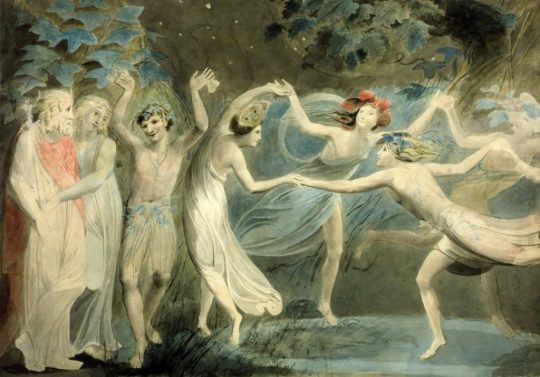
(“Oberon, Titania and Puck with Fairies Dancing” illustration by William Blake, c. 1786)
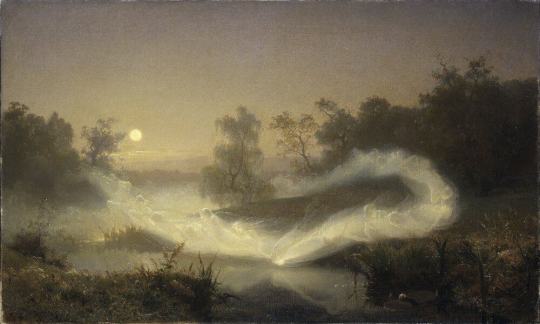
(“Älvalek” or “Elf Play” although the museum lists it as “Dancing Fairies” - oil painting by August Malmström 1866)
-> In Irish folklore, The Tuatha Dé Danann (meaning "the folk of the goddess Danu") are also known by their earlier name Tuath Dé ("tribe of the gods"), because in some beliefs the Fae are Demoted Pagan Deities. They are described as a supernatural race, much like idealized humans, who are immune from ageing and sickness, and bear the ability to wield magic. The powers most often attributed to the Tuath Dé are control over the weather and the elements, and the ability to shapeshift.
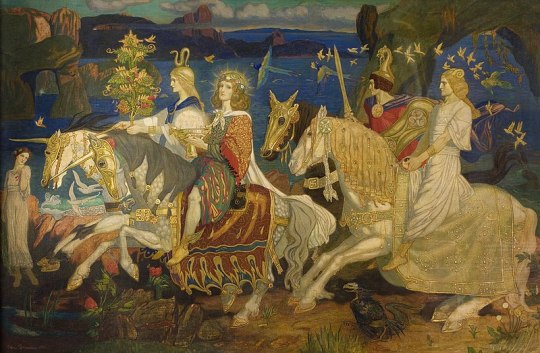
(The Tuatha Dé Danann as depicted in John Duncan's Riders of the Sidhe - 1911)
All in all, in folklore, faeries actually rarely have wings, but they are often depicted with them in Victorian and later artworks.
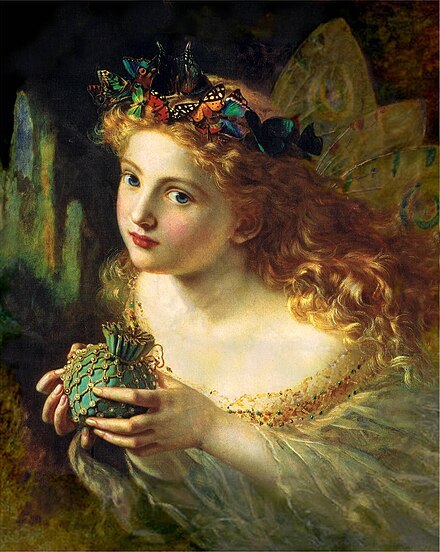
(A portrait of a fairy, by Sophie Gengembre Anderson - 1869. The title of the painting is Take the Fair Face of Woman, and Gently Suspending, With Butterflies, Flowers, and Jewels Attending, Thus Your Fairy is Made of Most Beautiful Things – from a verse by Charles Ede.)
What I've noticed is that, in the traditional sense, fairies often fly using magic, or by perching on the backs of birds, ragwort stems, or other mythological creatures like dragons or gryphons.
And some depictions are vague enough to attest a certain attribute (like wings) as a creative liberty to a faerie that, say 'lives in the sky'.
But does that mean the Fae in early folklore do not have wings at all?
Absolutely not.
You see, thus far, I've only listed depictions of the Fae that are most reminiscent of the 'traditional Elf'. But have you ever heard of Leprechauns... Banshees... Changelings...Pixies... Mermaids...
Sprites, Goblins, Gnomes?
The freaking Headless Horseman?
Because they're all also faeries.
There are also faerie animals. Heard of Kelpies, anyone?
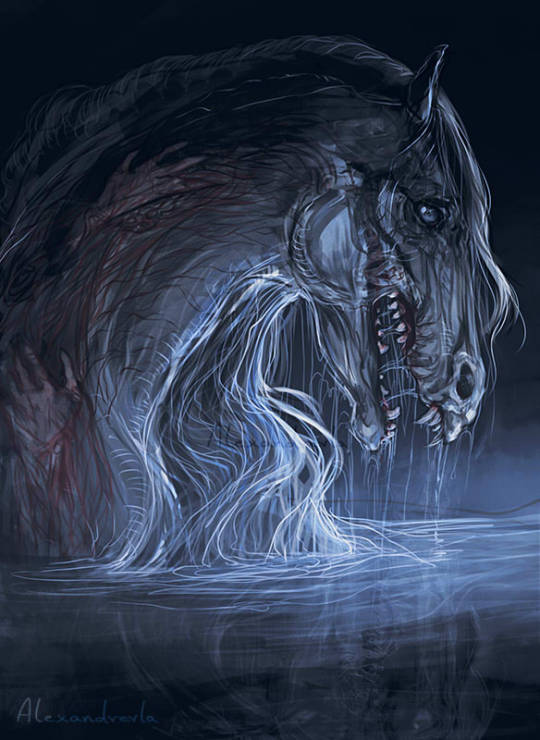
And quite frankly, it is not possible for me to summarize the scope, the depth and the richness of the cultures depicting these creatures with all of their variants. There are Eastern cultures, Western cultures, Indigenous cultures; I'm Bulgarian and my own culture has beliefs about faeries and Fae-like beings (the Slavs are a whole different ball game when it comes to that).
People dedicate their entire lives to become Folklorists and will still barely scratch the surface. All in all, there's just not one set of rules for the Fae, we can't amalgamize them into one thing, that's just not how it rolls.
So what can I say about my depiction of the Fae in Path of Alfheim?
Well... I have a ton of variety to play around with. 😁
My understanding is that the Fae all vary from each other depending on their lineage, their upbringing, their alignment, the territories and/or 'realms' that they inhabit. There are so many species out there that every shape and form you can possibly think of likely exists.
And besides the faeries that live on land, there are also lake folk, sea folk, mountain folk, valley folk, air folk, a specific corner of the room at night folk.
They can be spirits, ghosts, animals, monsters, elementals, demons, demoted angels, deities, human... It goes on.
Something that hugely inspired me, and what I think is a beautiful depiction of the Fae, happens to be the Disney Maleficent duology with Angelina Jolie as the main female lead. The production had Holly Black, a New York Times best-selling author of over thirty fantasy novels (The Cruel Prince being one of them) and a Faerie Folklorist, on set.
And, oh, would you look at that?

Maleficent has wings. 😉
So whether the FMC does as well is up to the interpretation.... for now.
Thank you for the Ask, Anon! ❤️
12 notes
·
View notes
Text
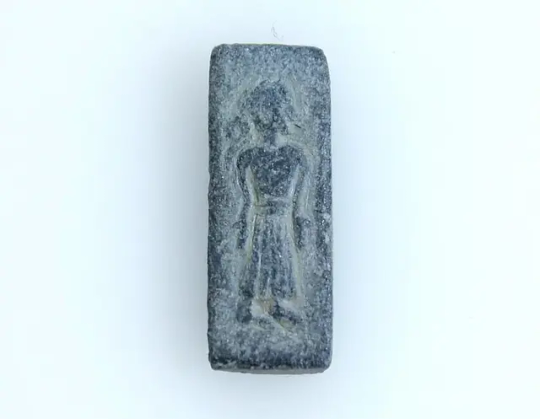
Rare Ancient Stamps Found in Denmark
In the center of Falster, southeast of Denmark, a man with a metal detector has made an important discovery. The discovery is so important that it could help write a few chapters for Danish history or at least the local history of Falster.
While Lennart Larsen was out on a rainy day and searching for anything of historical value, he suddenly heard a faint beep in his equipment, and when he checked the ground, he discovered small, interesting objects, unlike anything he had seen before.
A faint beep has indeed revealed a special stamp in the ground – a so-called Patrice – that was used to make gold images, which are believed to be gifted to the gods.
The Museum Lolland-Falster has been informed. The only two-centimeter-long object in Falster’s soil may be a trace of a former royal power on Falster, the museum said.
“This indicates that we are standing in a place that has meant some trade and probably also had some form of cultic activity. And although it’s a bit wild to say, it could also indicate that it was once a center of power on Falster,” museum inspector and archaeologist Marie Brinch from the Lolland-Falster Museum said.
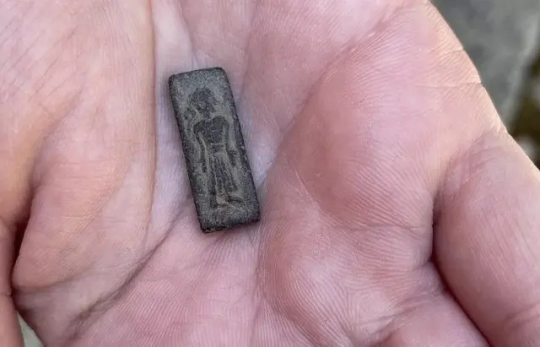
She emphasizes that the discovery was made in an area with names dating back to the Viking Age or even earlier and that the marshland was discovered in an area that had been sacrificed to the gods in the century preceding the stamp’s creation.
Archaeologists have before come across several signs of activity from the Iron Age and the Viking Age have been found, including an enormous shipyard and a large castle from the Viking Age at Falster. However, only a small number of discoveries have been made that can demonstrate where the island’s wealthy elite resided in the years prior to the beginning of the Viking Age. The new find may help to shed light on that.
Researchers have determined the tiny objects are stamps from the era just before the Viking Age. They were created between the years 500 and 700.
According to Margrethe Watt of the National Museum, who collects and researches ancient gold coins and stamps, these are extremely rare. There have only been 28 stamps discovered in the entire Nordic region, including the one from Falster, and it is a very unique stamp. South of the Baltic Sea, no stamps or gold coins have been discovered.
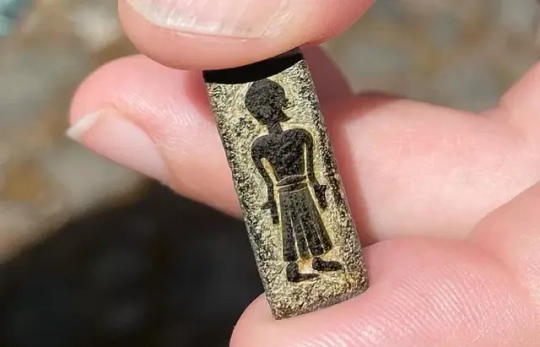
“The stamps are all very special. We only find them in the most important places of residence – those that we call the central places in the technical language. These are the places that we associate with the greatest magnates or kings. That’s the league we’re in here. And this stamp is at the same time very much for itself in its style,” she says.
“On the stamp from Falster, you can see a person in fine clothes, standing with their hands at a very special angle. The hands are down, and the palms are visible. It is something that we know in both Christian and pre-Christian cultures as either a sign of submission or a revelation. It is also a symbol that we see in many churches today, Watt explains.
Neither the god nor the king were shown as weak or flawed in any way. And you don’t see that on the stamp from Falster either. “This means that it is either a royal figure who submits to a god – or that it is a god who reveals himself to a human being,” she says.
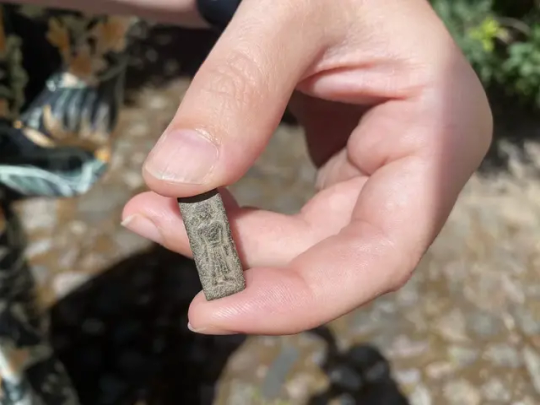
“It is actually difficult to see if it is a man or a woman who is depicted. You would see that by the fact that there is a tuft of hair on the back of the piston. But it may well appear that there is, she says, and emphasizes that it requires further investigations to determine whether this is the case.
As there may be more finds in the ground at the site, Museum Lolland-Falster does not yet want to publish where the find was made – but states that it was made in central Falster.
By Leman Altuntaş.
#Rare Ancient Stamps Found in Denmark#Falster Denmark#patrice stamp#ancient artifacts#archeology#archeolgst#history#history news#ancient history#ancient culture#ancient civilizations#Iron Age#viking age
54 notes
·
View notes
Note
Any solo-player/journal games that are a bit more lighthearted, preferably with a focus on character building?
Theme: Light-Hearted, Character-Focused Solo Games.
Hello friend! I have some games here that skew more towards the Light-Hearted end of the scale, while others skew more towards Character Building. I hope one of them fits right in the niche you are looking for!







Souvenirs, by Rémi Töötätä.
You are going on a week-long vacation. You are determined to enjoy every visit you go on and come back home with souvenirs from each day, including one for your friend who is taking care of your pet while you’re away.
During the game, you will keep a journal of the places you’re going to and the souvenirs you’re getting. Draw cards each day of your vacation and use prompts to imagine the places you visit, the items you get as souvenirs and the memories they represent.Make yourself a nice cup of tea, write the diary of your character each day, maybe draw a map of the region and pictures of the items you imagine, or play entirely in your head; and most of all, have a lovely time!
This looks like a very lighthearted game, and the souvenirs you collect as you play seem like excellent tools to convey personal memories. This game is meant to happen over the course of a week, so every morning you can sit down and journal about where your character would visit, and what would catch their eye. As you do so, you’ll also want to think about who you’re buying for, and what kind of connection you have to them. At the end of the game, you’ll have a lovely web of relationships, as well as a little story to take back to your NPC friends.
Hygge Holiday, by Figgins.
Hygge Holiday is a solo journaling RPG set in a cozy small village in a Nordic country.
You’ve travelled home for an extended winter holiday, with lots of vacation time. Winter is a time to slow down and focus on simple pleasures and good company. Luckily, the Nordic countries offer free health care and university education, on top of many weeks of paid holiday per year, and generous unemployment benefits--meaning less worry, stress and uncertainty, and more time for enjoying the simple pleasures in life. How will you spend your time, and with whom?
This game probably feels more fitting for the cold weather days, but it certainly looks like a great cozy game none the less. You earn paper snowflakes that reflect your experiences and you will also journal about these memories, which might fit the character-building kind of theme you are looking for!
Etude of the Evening, by Takuma Okada.
Etude of the Evening is a tabletop roleplaying game about recovering lost objects from your brilliant past. It is a hack of Songs for the Dusk by Kavita Poduri and Quinn Vega combined with You Will Destroy Something Beautiful by Samantha Day. Uses a six-sided die, for 1 to 3 players. 1-2 hours.
Overall, I think the tone for this game can vary, but it certainly hits the spot of focusing on your character. You’ll answer questions about who you are at the beginning of the game, and navigate a strange landscape. If you want to focus on a light-hearted tone, then you’ll just want to take descriptive choices that focus on beauty rather than decay.
The Land Beyond, by Cezar Capacle.
You are a raccoon. You lived your whole life on an island but now you have a hot air balloon.
You want to be free and reach The Land Beyond.
The Land Beyond is a solo RPG about letting go and going beyond what you think you could. You travel through wondrous lands living fantastic adventures along the way.
During your journey, you will have the opportunity to reflect upon the burdens you carry with you and, luckily, let go of them so you can travel even further.
This is a journeying game that looks like it’s probably a little less light-hearted than you’re looking for, but really focuses on character reflection. I like the oracles for events in this book, and the idea of tracking the gas in your balloon in order to see how far you can go. I’m keeping this recommendation in because even if it requires a lot of serious character reflection, at the end of the day, you’re still a raccoon in a hot air balloon - and that just feels whimsical to me.
Creation Myths, by gothHoblin.
Creation Myths is a solo journeying game based on the hero's journey/monomyth narrative template.
It is designed to help you dive deeper into character creation through the development of a backstory adventure via dice and prompts, and to provide you with new things to think about. It can also work as a way to redevelop existing characters and generate fresh ideas. With multiple modes of play available, all you need is a set of dice and somewhere to write. Let your imagination do the rest!
This is another case of your mileage may vary when it comes to tone, because you’ll be the source of ideas for coming up with a character backstory. This is meant to be pretty genre-agnostic, so you might want to pull from other games or pieces of media to decide what kind of character you want to write backstory for. It’s solely focused on character development, but again, whether or not it’s lighthearted is probably up to you.
Incarnation, by breathing stories.
At some mundane moment, something shifted in you. The number of ‘coincidences’ became too large to be without meaning. The deja vu became impossible to ignore. It hit you, not like a sack of bricks, but like a shawl landing firmly on your shoulders.
This is not your first life. You have lived many others, and now they start trickling in…
In Incarnation, you create a character who has just become aware that the life they are leading is not their first life. Using a tarot deck you will create the story of this character and their past lives, uncovering secrets pleasant and otherwise.
With all that this character has been through, the weight of all they hold, who are they really?
This game has the potential to shift in tone, but since it’s played using a tarot deck, I feel like much of the genre and details will depend on the player’s interpretation. It’s deeply tied to character building, as the game revolves around discovering your character’s past lives. If Anamnesis sounds up your alley, then this game might tick a lot of the same boxes, as it’s built on the same set of rules.
Fox Curio’s Floating Bookshop, by lostwaysclub.
Welcome to the River; a flowing path born at the mountain’s feet. In her high narrows, barely two boats fit lengthwise; a furious pounding of water. From these rocky ravines, she threads her way through the land, until she reaches the Great Sea. Quiet and slow-moving in these lowlands, she provides homes for those who live upon her waters and food for those who live beside her.
Your days are filled with customers, leaks and the irritating nook beetles that bury into the pages of your books. Make friends with regular customers to the bookshop, experience the River as she moves through the different seasons, visit and explore various towns, go fishing in the River's rich waters. Throughout the year, the seasons change and holidays give the chance for you to join in celebrations and festivities with the animalfolk.
This game is at the top of the list when looking at tone; it’s absolutely lighthearted, but I’m not sure how much it focuses on character building. Most of the focus will be on your customers, but I think as you journal, you have the potential to learn more about your character through the kinds of books they sell and how they deal with customers. Overall the tone of this world is so beautiful and peaceful, it’s on my own list of games I’d love to play.
Games I've Recommended in the Past
Void 1680 AM, by Bannerless Games.
Anamnesis, by Sam Leigh.
Wanderhome, by Jay Dragon.
76 notes
·
View notes
Photo
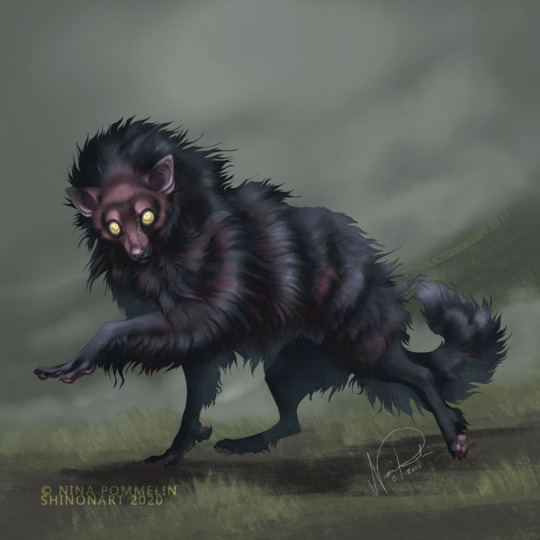
The Shug Monkey [modern cryptid/urban legend]
Rendlesham Forest in Suffolk, England is supposedly home to a strange apelike being. This creature is most commonly described as a cross between a large mastiff and an ape or monkey. Its head and body are vaguely humanoid (though one account of a sighting from 1983 claims that the head is unmistakably that of a mastiff) while its legs are very doglike with large paws, leaving very large prints in the ground with a peculiar shape: these paw prints vaguely resemble those of a dog or cat, but are much larger and equipped with flat fingernails instead of canine claws. These prints are of great interest to cryptozoologists. That’s because unlike most of the creatures on this list, the Shug Monkey is by all accounts more of a cryptid than a mythical creature, although there isn’t a clearly defined boundary between the two – folklore isn’t an exact science, after all.
That is also why my sources on this post aren’t exactly scientific reports: there are no reliable accounts of the existence of this creature (obviously, otherwise it wouldn’t be a cryptid). Another relevant detail that cryptozoology fans are often quick to point out is that Rendlesham Forest is also the setting of one of England’s most well known UFO sightings! As the story goes, a series of inexplicable lights appeared in the sky above Rendlesham Forest in 1890, and there are claims of a UFO landing somewhere in the woods during that time. Perhaps because of that, there are a lot of stories about unexplained phenomena from this region, such as sightings of ghostly cat-like creatures.
Guillaume de Lavigne claimed that the Shug Monkey is derived from an older Nordic legend, but I found no evidence of this. It has also been compared to werewolves and the classic ‘black dog’ folk creature.
Despite being a physical, corporeal creature, the Shug Monkey is evanescent and difficult to catch sight of, disappearing and escaping without effort in a manner that has been compared to ghosts and spectres. At least one account of a supposed encounter with a Shug Monkey has the creature appearing and disappearing at will. All of this makes it difficult to classify the Shug Monkey: it is a mythical creature, a ghost, an alien or a cryptid, depending on who you ask.
Sources: Redfern, N., 2004, Three Men Seeking Monsters: Six Weeks in Pursuit of Werewolves, Lake Monsters, Giant Cats, Ghostly Devil Dogs and Ape-men, Simon and Schuster, 272 pp. De Lavigne, G., 2015, Les Chiens Célèbres, Réels et Fictifs, dans l’art, la culture et l’histoire, Lulu, 572 pp. (image source: ShadeofSinon on Deviantart)
73 notes
·
View notes
Text
Iduna and her Apples: how Loki put the gods in danger

It's apple season! Okay it's almost the end of apple season where I am, but still! Apples may be seen as over rated these days, but they have a long history in many cultures as being a divine fruit. They contain properties of Love, Divination, Immortality, Rebirth, Hidden Knowledge, Longevity, and more. The apple has become the symbol for fruit in general. So much so that depictions of the story of Adam and Eve eating the forbidden fruit show them eating an apple. However, the original scripture describes a fig. Likely because apples were not cultivated yet thus were not as widely eaten. But apples are also seen in Greek stories like the Golden Apples, and everyone knows how Snow White ate a poisoned apple, only to wake again at true love's kiss.
Apples have also changed a lot over the past few thousand years. Humans have worked to grow them sweeter, bigger, and more colourful. Pretty good considering it started from crab apples! There is so much info out there about apples, there's no way I can fit it all in one post. But I wanted to share this Nordic Mythology/Folktale with apples. It helps really hammer home just how important and in how high regard apples were seen.
In Asgard there was a garden, and in that garden there grew a tree, and on that tree there grew shining apples. Thou knowst, O well-loved one, that every day that passes makes us older and brings us to that day when we will be bent and feeble, gray-headed and weak-eyed. But those shining apples that grew in Asgard—they who ate of them every day grew never a day older, for the eating of the apples kept old age away.
Iduna, the Goddess, tended the tree on which the shining apples grew. None would grow on the tree unless she was there to tend it. No one but Iduna might pluck the shining apples. Each morning she plucked them and left them in her basket and every day the Gods and Goddesses came to her garden that they might eat the shining apples and so stay for ever young.
Iduna never went from her garden. All day and every day she stayed in the garden or in her golden house beside it, and all day and every day she listened to Bragi, her husband, tell a story that never had an end. Ah, but a time came when Iduna and her apples were lost to Asgard, and the Gods and Goddesses felt old age approach them. How all that happened shall be told thee, O well beloved.
Odin, the Father of the Gods, often went into the land of men to watch over their doings. Once he took Loki with him, Loki, the doer of good and the doer of evil. For a long time they went traveling through the world of men. At last they came near Jötunheim, the realm of the Giants.
It was a bleak and empty region. There were no growing things there, not even trees with berries. There were no birds, there were no animals. As Odin, the Father of the Gods, and Loki, the doer of good and the doer of evil, went through this region hunger came upon them. But in all the land around they saw nothing that they could eat.
Loki, running here and running there, came at last upon a herd of wild cattle. Creeping up on them, he caught hold of a young bull and killed him. Then he cut up the flesh into strips of meat. He lighted a fire and put the meat on spits to roast. While the meat was being cooked, Odin, the Father of the Gods, a little way off, sat thinking on the things he had seen in the world of men.
Loki made himself busy putting more and more logs on the fire. At last he called to Odin, and the Father of the Gods came and sat down near the fire to eat the meal.
But when the meat was taken off the cooking-spits and when Odin went to cut it, he found that it was still raw. He smiled at Loki for thinking the meat was cooked, and Loki, troubled that he had made a mistake, put the meat back, and put more logs upon the fire. Again Loki took the meat off the cooking-spits and called Odin to the meal.
Odin, when he took the meat that Loki brought him, found that it was as raw as if it had never been put upon the fire. "Is this a trick of yours, Loki?" he said.
Loki was so angry at the meat being uncooked that Odin saw he was playing no tricks. In his hunger he raged at the meat and he raged at the fire. Again he put the meat on the cooking-spits and put more logs on the fire. Every hour he would take up the meat, sure that it was now cooked, and every time he took it off Odin would find that the meat was as raw as the first time they took it off the fire.
Now Odin knew that the meat must be under some enchantment by the Giants. He stood up and went on his way, hungry but strong. Loki, however, would not leave the meat that he had put back on the fire. He would make it be cooked, he declared, and he would not leave that place hungry.
The dawn came and he took up the meat again. As he was lifting it off the fire he heard a whirr of wings above his head. Looking up, he saw a mighty eagle, the largest eagle that ever appeared in the sky. The eagle circled round and round and came above Loki's head. "Canst thou not cook thy food?" the eagle screamed to him.
"I cannot cook it," said Loki.
"I will cook it for thee, if thou wilt give me a share," screamed the eagle.
"Come, then, and cook it for me," said Loki.
The eagle circled round until he was above the fire. Then flapping his great wings over it, he made the fire blaze and blaze. A heat that Loki had never felt before came from the burning logs. In a minute he drew the meat from the spits and found it was well cooked.
"My share, my share, give me my share," the eagle screamed at him. He flew down, and seizing on a large piece of meat instantly devoured it. He seized on another piece. Piece after piece he devoured until it looked as if Loki would be left with no meat for his meal.
As the eagle seized on the last piece Loki became angry indeed. Taking up the spit on which the meat had been cooked, he struck at the eagle. There was a clang as if he had struck some metal. The wood of the spit did not come away. It stuck to the breast of the eagle. But Loki did not let go his hold on the spit. Suddenly the eagle rose up in the air. Loki, who held to the spit that was fastened to the eagle's breast, was drawn up with him.
Before he knew what had happened Loki was miles and miles up in the air and the eagle was flying with him to ward Jötunheim, the Realm of the Giants. And the eagle was screaming out, "Loki, friend Loki, I have thee at last. It was thou who didst cheat my brother of his reward for building the wall round Asgard. But, Loki, I have thee at last. Know now that Thiassi the Giant has captured thee, O Loki, most cunning of the dwellers in Asgard."
Thus the eagle screamed as he went flying with Loki toward Jötunheim, the Realm of the Giants. They passed over the river that divides Jötunheim from Midgard, the World of Men. And now Loki saw a terrible place beneath him, a land of ice and rock. Great mountains were there: they were lighted by neither sun nor moon, but by columns of fire thrown up now and again through cracks in the earth or out of the peaks of the mountains.
Over a great iceberg the eagle hovered. Suddenly he shook the spit from his breast and Loki fell down on the ice. The eagle screamed out to him, "Thou art in my power at last, O thou most cunning of all the Dwellers in Asgard." The eagle left Loki there and flew within a crack in the mountain.
Miserable indeed was Loki upon that iceberg. The cold was deadly. He could not die there, for he was one of the Dwellers in Asgard and death might not come to him that way. He might not die, but he felt bound to that iceberg with chains of cold.
After a day his captor came to him, not as an eagle this time, but in his own form, Thiassi the Giant.
"Wouldst thou leave thine iceberg, Loki," he said, "and return to thy pleasant place in Asgard? Thou dost delight in Asgard, although only by one-half dost thou belong to the Gods. Thy father, Loki, was the Wind Giant."
"O that I might leave this iceberg," Loki said, with the tears freezing on his face.
"Thou mayst leave it when thou showest thyself ready to pay thy ransom to me," said Thiassi. "Thou wilt have to get me the shining apples that Iduna keeps in her basket."
"I cannot get Iduna's apples for thee, Thiassi," said Loki.
"Then stay upon the iceberg," said Thiassi the Giant. He went away and left Loki there with the terrible winds buffeting him as with blows of a hammer.
When Thiassi came again and spoke to him about his ransom, Loki said, "There is no way of getting the shining apples from Iduna."
"There must be some way, O cunning Loki," said the Giant.
"Iduna, although she guards well the shining apples, is simple-minded," said Loki. "It may be that I shall be able to get her to go outside the wall of Asgard. If she goes she will bring her shining apples with her, for she never lets them go out of her hand except when she gives them to the Gods and Goddesses to eat."
"Make it so that she will go beyond the wall of Asgard," said the Giant. "If she goes outside of the wall I shall get the apples from her. Swear by the World-Tree that thou wilt lure Iduna beyond the wall of Asgard. Swear it, Loki, and I shall let thee go."
"I swear it by Ygdrassil, the World-Tree, that I will lure Iduna beyond the wall of Asgard if thou wilt take me off this iceberg," said Loki.
Then Thiassi changed himself into a mighty eagle, and taking Loki in his talons, he flew with him over the stream that divides Jötunheim, the Realm of the Giants, from Midgard, the World of Men. He left Loki on the ground of Midgard, and Loki then went on his way to Asgard.
Now Odin had already returned and he had told the Dwellers in Asgard of Loki's attempt to cook the enchanted meat. All laughed to think that Loki had been left hungry for all his cunning. Then when he came into Asgard looking so famished, they thought it was because Loki had had nothing to eat. They laughed at him more and more. But they brought him into the Feast Hall and they gave him the best of food with wine out of Odin's wine cup. When the feast was over the Dwellers in Asgard went to Iduna's garden as was their wont.
There sat Iduna in the golden house that opened on her garden. Had she been in the world of men, every one who saw her would have remembered their own innocence, seeing one who was so fair and good. She had eyes blue as the blue sky, and she smiled as if she were remembering lovely things she had seen or heard. The basket of shining apples was beside her.
To each God and Goddess Iduna gave a shining apple. Each one ate the apple given, rejoicing to think that they would never become a day older. Then Odin, the Father of the Gods, said the runes that were always said in praise of Iduna, and the Dwellers in Asgard went out of Iduna's garden, each one going to his or her own shining house.
All went except Loki, the doer of good and the doer of evil. Loki sat in the garden, watching fair and simple Iduna. After a while she spoke to him and said, "Why dost thou still stay here, wise Loki?"
"To look well on thine apples," Loki said. "I am wondering if the apples I saw yesterday are really as shining as the apples that are in thy basket."
"There are no apples in the world as shining as mine," said Iduna.
"The apples I saw were more shining," said Loki. "Aye, and they smelled better, Iduna."
Iduna was troubled at what Loki, whom she deemed so wise, told her. Her eyes filled with tears that there might be more shining apples in the world than hers. "O Loki," she said, "it cannot be. No apples are more shining, and none smell so sweet, as the apples I pluck off the tree in my garden."
"Go, then, and see," said Loki. "Just outside Asgard is the tree that has the apples I saw. Thou, Iduna, dost never leave thy garden, and so thou dost not know what grows in the world. Go outside of Asgard and see."
"I will go, Loki," said Iduna, the fair and simple.
Iduna went outside the wall of Asgard. She went to the place Loki had told her that the apples grew in. But as she looked this way and that way, Iduna heard a whirr of wings above her. Looking up, she saw a mighty eagle, the largest eagle that had ever appeared in the sky.
She drew back toward the gate of Asgard. Then the great eagle swooped down; Iduna felt herself lifted up, and then she was being carried away from Asgard, away, away; away over Midgard where men lived, away toward the rocks and snows of Jötunheim. Across the river that flows between the World of Men and the Realm of the Giants Iduna was borne. Then the eagle flew into a cleft in a mountain and Iduna was left in a cavernous hall lighted up by columns of fire that burst up from the earth.
The eagle loosened his grip on Iduna and she sank down on the ground of the cavern. The wings and the feathers fell from him and she saw her captor as a terrible Giant.
"Oh, why have you carried me off from Asgard and brought me to this place?" Iduna cried.
"That I might eat your shining apples, Iduna," said Thiassi the Giant.
"That will never be, for I will not give them to you," said Iduna.
"Give me the apples to eat, and I shall carry you back to Asgard."
"No, no, that cannot be. I have been trusted with the shining apples that I might give them to the Gods only."
"Then I shall take the apples from you," said Thiassi the Giant.
He took the basket out of her hands and opened it. But when he touched the apples they shriveled under his hands. He left them in the basket and he set the basket down, for he knew now that the apples would be no good to him unless Iduna gave them to him with her own hands.
"You must stay with me here until you give me the shining apples," he said to her.
Then was poor Iduna frightened: she was frightened of the strange cave and frightened of the fire that kept bursting up out of the earth and she was frightened of the terrible Giant. But above all she was frightened to think of the evil that would fall upon the Dwellers in Asgard if she were not there to give them the shining apples to eat.
The Giant came to her again. But still Iduna would not give him the shining apples. And there in the cave she stayed, the Giant troubling her every day. And she grew more and more fearful as she saw in her dreams the Dwellers in Asgard go to her garden—go there, and not being given the shining apples, feel and see a change coming over themselves and over each other.
It was as Iduna saw it in her dreams. Every day the Dwellers in Asgard went to her garden—Odin and Thor, Hödur and Baldur, Tyr and Heimdall, Vidar and Vali, with Frigga, Freya, Nanna, and Sif. There was no one to pluck the apples of their tree. And a change began to come over the Gods and Goddesses.
They no longer walked lightly; their shoulders became bent; their eyes no longer were as bright as dewdrops. And when they looked upon one another they saw the change. Age was coming upon the Dwellers in Asgard.
They knew that the time would come when Frigga would be gray and old; when Sif's golden hair would fade; when Odin would no longer have his clear wisdom, and when Thor would not have strength enough to raise and fling his thunderbolts. And the Dwellers in Asgard were saddened by this knowledge, and it seemed to them that all brightness had gone from their shining City.
Where was Iduna whose apples would give back youth and strength and beauty to the Dwellers in Asgard? The Gods had searched for her through the World of Men. No trace of her did they find. But now Odin, searching through his wisdom, saw a means to get knowledge of where Iduna was hidden.
He summoned his two ravens, Hugin and Munin, his two ravens that flew through the earth and through the Realm of the Giants and that knew all things that were past and all things that were to come. He summoned Hugin and Munin and they came, and one sat on his right shoulder and one sat on his left shoulder and they told him deep secrets: they told him of Thiassi and of his desire for the shining apples that the Dwellers in Asgard ate, and of Loki's deception of Iduna, the fair and simple.
What Odin learnt from his ravens was told in the Council of the Gods. Then Thor the Strong went to Loki and laid hands upon him. When Loki found himself in the grip of the strong God, he said, "What wouldst thou with me, O Thor?"
"I would hurl thee into a chasm in the ground and strike thee with my thunder," said the strong God. "It was thou who didst bring it about that Iduna went from Asgard."
"O Thor," said Loki, "do not crush me with thy thunder. Let me stay in Asgard. I will strive to win Iduna back."
"The judgment of the Gods," said Thor, "is that thou, the cunning one, shouldst go to Jötunheim, and by thy craft win Iduna back from the Giants. Go or else I shall hurl thee into a chasm and crush thee with my thunder."
"I will go," said Loki.
From Frigga, the wife of Odin, Loki borrowed the dress of falcon feathers that she owned. He clad himself in it, and flew to Jötunheim in the form of a falcon.
He searched through Jötunheim until he found Thiassi's daughter, Skadi. He flew before Skadi and he let the Giant maid catch him and hold him as a pet. One day the Giant maid carried him into the cave where Iduna, the fair and simple, was held.
When Loki saw Iduna there he knew that part of his quest was ended. Now he had to get Iduna out of Jötunheim and away to Asgard. He stayed no more with the Giant maid, but flew up into the high rocks of the cave. Skadi wept for the flight of her pet, but she ceased to search and to call and went away from the cave.
Then Loki, the doer of good and the doer of evil, flew to where Iduna was sitting and spoke to her. Iduna, when she knew that one of the Dwellers in Asgard was near, wept with joy.
Loki told her what she was to do. By the power of a spell that was given him he was able to change her into the form of a sparrow. But before she did this she took the shining apples out of her basket and flung them into places where the Giant would never find them.
Skadi, coming back to the cave, saw the falcon fly out with the sparrow beside him. She cried out to her father and the Giant knew that the falcon was Loki and the sparrow was Iduna. He changed himself into the form of a mighty eagle. By this time sparrow and falcon were out of sight, but Thiassi, knowing that he could make better flight than they, flew toward Asgard.
Soon he saw them. They flew with all the power they had, but the great wings of the eagle brought him nearer and nearer to them. The Dwellers in Asgard, standing on the wall, saw the falcon and the sparrow with the great eagle pursuing them. They knew who they were—Loki and Iduna with Thiassi in pursuit.
As they watched the eagle winging nearer and nearer, the Dwellers in Asgard were fearful that the falcon and the sparrow would be caught upon and that Iduna would be taken again by Thiassi. They lighted great fires upon the wall, knowing that Loki would find a way through the fires, bringing Iduna with him, but that Thiassi would not find a way.
The falcon and the sparrow flew toward the fires. Loki went between the flames and brought Iduna with him. And Thiassi, coming up to the fires and finding no way through, beat his wings against the flames. He fell down from the wall and the death that came to him afterwards was laid to Loki.
Thus Iduna was brought back to Asgard. Once again she sat in the golden house that opened to her garden, once again she plucked the shining apples off the tree she tended, and once again she gave them to the Dwellers in Asgard. And the Dwellers in Asgard walked lightly again, and brightness came into their eyes and into their cheeks; age no more approached them; youth came back; light and joy were again in Asgard.
#norse mythology#norse gods#Loki#Iduna#Odin#Food and Folklore#apples#apple magic#mythology#fairytale#folklore#November#witch#kitchen witch#klickwitch#fruit
18 notes
·
View notes
Text
After our little Tavastia adventure, I ventured northwards towards Rovaniemi on an 11 hour bus ride. Yes that’s right, 11 hours. And every minute of it was beautiful, except that I came woefully underprepared under the assumption that the driver would make occasional stops and let us off to top up on food and water.

I survived, anyhow, and so we move forward with The Finland Chronicles Part 2: Lapland
(Disclaimer: anyone on here who also has me on socials knows how much I loved this place and posted about it, so I promise this is the last you’ll hear of it from me…at least for a couple months)

So I arrived at around 7 in the evening, and the city is surprisingly quite walkable (barring the moments you're wheeling around a suitcase in the snow). This was a little plaza right around the corner from my guesthouse and I fell in love right away. Look how cute it is!
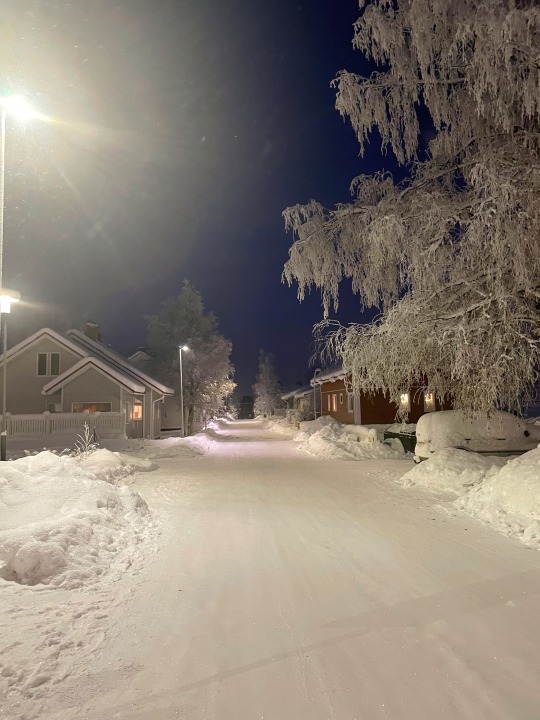

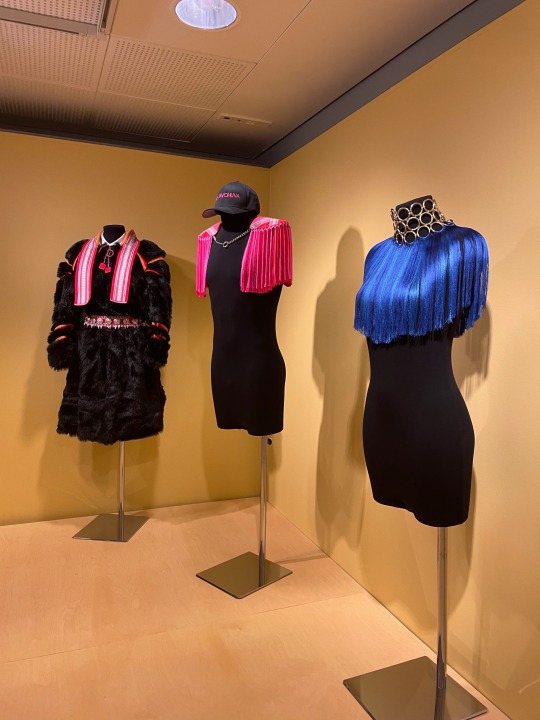
My first full day in Rovaniemi was a bit slower because there was laundry to be done and very few machines to go around between the guests, so I did set off a bit late. Mind you, at that point in January the sun would rise close to 11 am and set close to 2 pm so we'd get 2.5 hours of sunlight MAX. The above image is the neighborhood around my guesthouse close to 4 pm. Night. Nevertheless, I made the most of it and visited the Arktikum Museum, which is beautiful architecturally but also provides the public with interesting exhibits on the history, culture, flora and fauna of Finnish Lapland, as well as the impacts of climate change on the region. I didn't get any particularly noteworthy pictures except for one of a giant amethyst (Does anyone else think Abigail from Stardew Valley would've loved this place?) and a modern twist on the traditional clothing of the Sámi, the indigenous people of Lapland.
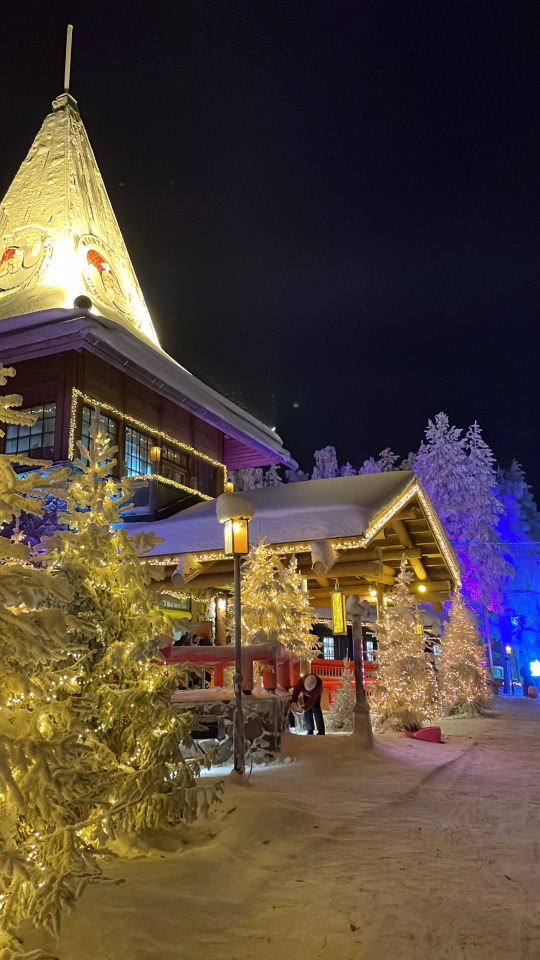



Afterwards, I caught a bus to the Santa Claus Village, which yes, is quite the tourist trap, but is so completely and utterly cute, and if I had to live somewhere that looked this magical (preferably sans tourists) I would not complain. A lot of shops, restaurants, and activity points in the village close quite early, so I didn't get to partake in activities like petting Santa's reindeer, but I enjoyed browsing the remaining open shops, having a quick dinner and visiting the spot in the village that marks the point of entry into the Arctic Circle.


The next day was my last full day in Rovaniemi, so to start I went on a tour I'd booked to visit Korouoma Nature Reserve, which is over an hour and half's drive away from Rovaniemi. Walking through this place filled me with a sense of happiness that I hadn't felt in a long time, it was like I'd suddenly found myself in Narnia. I feel like experiencing the rugged yet ethereal beauty of the nature firsthand also really helped me understand the mindset a lot of my favorite Scandinavian/Nordic artists, so I edited some snippets of our hike to the opening notes of "Crown" by Danish artist Myrkur.


And yeah, here's me posing on a little bridge (sidenote: those snow pants are not the most aesthetic, but when I tell you that winter gear is EXPENSIVE...these guys were so reasonably priced and they did their job well in the near -30 temps we were experiencing every day, so for that I salute them).

There are many beautiful frozen waterfalls as well as stalactities all around the reserve, but the most famous one is Charlie Brown, which preserves the beautiful blue shade of the water in the dead of winter. Having seen the main points of interest, our guide led us to a campsite, where he provided us with some tea and ginger biscuits, and grilled some sausages over a fire. I can't remember the last time I'd ever been so content.



Later that evening I set out for the last activity of my brief visit to Lapland: Aurora Hunting. The guides drove the various groups some distance outside of Rovaniemi to a spot with minimal light pollution and clearer skies, and proceeded to prepare us a meal of (yet again) grilled sausage, but also salmon and potato soup, and hot blueberry juice (which I loved). Upon realizing that the first spot would not render us any results in our hunt, they drove us to a second location, near a frozen lake, where several more groups had gathered.

I was about to give up hope, and my guide had come to call me back to the car, but luckily I had run into my guide from the hike earlier in the day (who also does Aurora tours) and he pointed out a glimmer in the sky off in the distance. So I snapped this picture. Something I learned on this tour is that oftentimes you do not see the Aurora Borealis the way your camera does, and while it is possible to get crazy lightshows, those usually happen further north of places like Rovaniemi, where the magnetic field is even stronger. So it's not my best picture, and I didn't really have time to mount my phone on my little tripod (I also could have brought a better camera, tbf) but I'm glad to have had the opportunity nevertheless, and hopefully this is not the last time Miss Aurora and I meet!
Another thing to note is that Aurora tours have become very popular, and because all these different companies try to maximize how many people they bring along with them, it can feel like a very impersonal, crowded and rushed experience. I'm sure there are private tours you can take, where you can take your time scouting different spots and taking photos, but they very likely cost a pretty penny. Nevertheless, I'm once again glad I had the opportunity and here's to next time.

And just like that it was time to leave. I was sad, but my eyelashes certainly weren't. I hopped on a bus back to Helsinki, this time better prepared for the journey ahead, but with an ache in my heart for what I was leaving behind. Lapland, I will return. Who knows, perhaps in summer.

And to conclude this chapter, here’s a little Rovaniemi haul (does not include the Reindeer chips and Reindeer jerky that I consumed on the spot after purchasing).
Until next time!
#finland#rovaniemi#lapland#scandinavia#nordic#winter#travel#photography#korouoma#waterfall#nature#aurora borealis#northern lights
7 notes
·
View notes
Text
David x Lycan Reader Part 7
On y/n way to the Nordic Coven in Norway, y/n stopped by some towns to find things y/n needed. Y/n had a couple of thoughts on what the creature was. Y/n as seen many mythical creatures, like fairies and dragons, as well as mages.
Y/n mother was killed by a mage, y/n was rescued by that mage, her name was Chise. She had a familiar, a black dog or church grim called Ruth, she lived in a small cottage with her husband Elias, he is also a mage. Chise had raised y/n for a bit then she was killed in her cottage by the vampires. Ruth died as soon as Chise died, Elias tried to fight off the vampires, but he was also killed.
The vampires had Elise in the cottage with his wife and friend, then they burned the cottage down. Y/n watched in the distance as everyone who cared for y/n died. Y/n was only 6 years old; you were 4 when Chise took y/n in. Y/n had a feeling it was a black dog like Ruth.
Y/n had looked in a couple of towns and y/n didn't find the book y/n needed.
Y/n was very young when Chise took y/n in.
She never really told y/n to much about mages. But she did explain to y/n about some mythical creatures. A book with all the mythical creatures and how to befriend and make them familiars. Y/n looked at the town that was near the Nordic Coven. Y/n walked a bit then y/n found the bookstore. Y/n opened the door and saw many old books, y/n then spot an old lady on a chair.
Y/n walked over to her; y/n saw she was pale. Y/n touched her, and she was ice cold. Y/n listened for a heartbeat but didn't hear anything. Y/n left the old lady there, y/n begins walking around. Y/n then spots it in a glass case, with other books about mages.
Y/n breaks the case and y/n takes all two books.
Y/n puts the in your bag, y/n then spots a blanket. You take it and walk to the old lady, y/n places it on her. Y/n then walks out, y/n looks up and sees a bit of snow fall. Y/n smells the air, "a storm is coming" you begin walking to the Nordic Coven castle, y/n wanted to get there before the storm. Y/n sees the castle across the lake, y/n begins digging.
Y/n made a huge tunnel in the ground. Y/n can walk through the tunnels without worry of y/n heading your head on the ceiling.
Y/n went all the way to the back of the tunnel, y/n took of your bag and y/n pulls out a lantern. Y/n lights it and places it on the ground. You then take out the books, y/n puts you back to the tunnel wall, y/n has eyes on the entrance.
Y/n opens the book about mythical creatures, y/n flips through the pages until y/n arrived at the page with a picture of a black dog. Y/n starts to read out loud about the black dog.
"Also known as a Black Grim, a Church Grim is a pure black dog that resides near a church or a grave. It is possible that a normal dog can be become a Church Grim. Usually, they are only dogs, in most regional folklore, the "black dog" is an omen of death and malice. Black Grim are a type of fae that were once hounds, who once served a Goddess of Death. They are likely born from hounds that die within graveyards, awakening as fae with the duty of protecting the dead and driving away those that would defile their place such as grave robbers and evil spirits".
Y/n flips the page and y/n sees the abilities and skills the black dog possesses. Y/n then reads out loud again.
"It can travel through shadows, also it can breathe fire".
Y/n also sees that some black dogs can shift into humans. Y/n closes the book, y/n well have to find a church or a grave. Y/n can hear the wind howling outside, y/n places the book in the backpack. Then y/n gets up and heads outside. You always loved the cold, the place y/n was born, winter was year-round.
Y/n doesn't feel the snow hitting y/n face, the wind is unforgiving, blowing trees roughly. Your eyes glow into the dark, y/n looks around and you see nothing lurking in the snowstorm. Y/n begins walking around the Nordic Coven castle, but y/n didn't see a church or an old grave.
You didn't even see remains of a church or grave. Y/n did a couple more sweeps of the area to try to find a grave or church, y/n even dug a few holes to see if y/n could smell a grave. Y/n sees the sun beginning to slowly rise, the snowstorm slowly letting up, you couldn't find any trace of a grave or church. Y/n was walking back to y/n tunnel when you hear something. The wind sudden stops and so does the snow, nothing but silence fell the chill air. You then hear it gain.
"Y/n", it is Eve, y/n walks to the sound of her voice.
Y/n sees her standing in front of the frozen lake, she is looking at the castle beyond the lake. Eve then turns around and looks at y/n. She smiles at you, "what are you doing out here, Eve", "I wanted to help you".
Y/n nods, Eve walks over to y/n, "I couldn't find anything", "what were you looking for, y/n". "A grave or a church", "there is a grave in the Nordic Coven. I will show you!" Eve grabs y/n hand but y/n doesn't move.
"I am not allowed to enter the Coven, Eve", she let's go of y/n hand and looks at y/n with a sad expression.
"Why?", "can you check for me Eve, see if you find anything out of the ordinary there". "Ok", "I will be waiting in the middle of the lake". Y/n and Eve make their way to the Nordic Coven castle, you are both walking side by side. Eve then begins speaking "he miss you", Eve looks at y/n.
She stares a bit at y/n, you don't look at her, y/n keeps your eyes forward and on the castle. Y/n stops in the middle of the lake, Eve stops and looks to y/n. "I will be back", y/n nods at her and Eve begins walking into the castle. Y/n sees Selene and Micheal talking to her then they all look at y/n.
Post 9/27/23
7 notes
·
View notes
Note
🔥 TES worldbuilding
somewhat related to the previous ask: there is a tendency to draw these stark lines between all the provinces of Tamriel (and this is common in fantasy writing as well) like: the border is HERE so the cultural and ecological differences begin HERE. oblivion did all right with this where Bruma and Cheydinhal sat right near the borders and had Nordic and Dunmer influences and populations, respectively. but it was totally absent in Skyrim.
flora and fauna aren't confined by borders and the most adaptable species would spread through colonization and travel as well. for another example... a breton character doesn't necessarily have to have light skin, since high rock shares a border with hammerfell, and in all likelihood there is a lot of porosity between the cultures in that region.
19 notes
·
View notes
Text
About Me

Look at the photo I took, it is pretty attracting! Bondi Beach is one of the most iconic beaches in Sydney, Australia. It's renowned for its golden sands, turquoise-blue waters, and vibrant atmosphere. Particularly, it is the most impressive beach I've been to this year which I would like to recommend for you guys.
As a crazy backpacker or travel enthusiast, I am Brand Liu from China, mostly agree with the point quoted from the Pico Iyer's article that " We travel to open our hearts and eyes and learn more about the world than our newspapers will accommodate. " I'd like to use "experience the world " to give you a better understanding of the quote. In other words, travelling provides us with an opportunity to go to strange and new places, to meet people in different cultural backgrounds , to see the beauty of nature, to try yummy food, to experience all amazing things that will happen around the world. We take actions to experience in person which broadens our horizons more than staying at home watching newspapers or surfing the internet. Therefore, I was driven by experiencing and learning a lot by the world to be an active backpacker. I've travelled around my home country so my goal is to explore the countries all over the planet. Hopefully, in my future travels, I wish more different places will be my destinations and I will gain the considerable knowledge of these to broaden my recognition and understanding of the world.

My next dream destination is Norway. It is a country known for its stunning natural landscapes, including fjords, mountains, and picturesque coastal towns. Norway's country specialization mainly could focus on its unique blend of natural beauty. Especially, Norway's unique natural phenomena, such as the Northern Lights (Aurora Borealis) and the Midnight Sun, which occurs during the summer months in the northern regions. Because of its location in the near-polar region, Norway can see these natural landscapes, making it a popular travel destination. And the beautiful Nordic scenery like the coastline and the fairy tale world of ice and snow are very attractive to tourists. Next we will learn about Norway much more together.
(second photo from app XiaoHongShu)
5 notes
·
View notes
Text

With NATO membership imminent, Sweden and the US sign a new defense cooperation agreement
Fernando Valduga By Fernando Valduga 08/12/2023 - 00:07in Military
U.S. Secretary of Defense Lloyd J. Austin III, and Swedish defense minister Pal Jonson signed a bilateral Defense Cooperation Agreement (DCA) on December 5, strengthening military ties between the two nations, which will allow bilateral exercises and new joint acquisitions and will further pave the way for Sweden's integration into NATO.
The agreement “will allow greater defense cooperation, such as the legal status of U.S. military personnel, access to areas of deployment and the pre-positioning of military material,” said Pentagon spokesman Brig. General Patrick S. Ryder told reporters: "The DCA also creates the necessary conditions for U.S. military support when requested and is therefore an agreement of great importance for both countries." More details were not provided immediately.
Following Russia's invasion of Ukraine in 2022, Sweden and Finland, who have long been neutral, applied to join NATO and, although Finland has been admitted to the alliance, Sweden's accession awaits the approval of Turkey and Hungary.
Jonson, speaking on December 5 with the Atlantic Council, refused to provide a schedule on when he expects the final obstacles to Sweden's accession to be eliminated, only saying that this will be "soon".

B-1 bombers first landed in Sweden in 2023.
“Turkey has granted Swedish guest status, saying that it is not if we are going to become members, but when... and we hope that this will be resolved as soon as possible,” Jonson said.
About the DCA between the US and Sweden, Jonson said: “This will make our close partnership even closer. It will create better conditions for U.S. forces, both to use Swedish territory as a preparation and base area, as well as for exercise, and it is also a deterrent. Therefore, the DCA will be a new cornerstone in our bilateral cooperation."
He later said that the U.S. military presence in Sweden “is important” for NATO integration and that the DCA will guide U.S. investment in the region.
Jonson's observations focused on how Sweden will integrate its armed forces into NATO and argued that Stockholm is already highly aligned, both operationally and technically, with NATO standards.
As an example, he cited last year's "Silver Arrow" exercise with the U.S., saying that it was Sweden's largest exercise in 25 years and highlighted the need to pay attention to logistics and maintenance, and the ability to "fight for a long time".

He noted that the Nordic countries of Norway, Finland and Denmark already work together militarily and all now have DCA with the U.S., which should accelerate and improve NATO interoperability in the Scandinavian region.
Sweden was one of the first members of the Partnership for Peace (PFP) - sometimes called "NATO Light" - created during the Clinton administration to establish a path for NATO membership for other European countries and for the former Warsaw Pact nations. The PFP has defined a series of steps, from joint exercises to common equipment and training standards, necessary for membership, and Sweden fully embraced all of them, Jonson said, and sent its troops to serve alongside NATO forces in Afghanistan, Kosovo and Libya.
“We are linked to NATO's regional plans,” he said, and Sweden offers not only state-of-the-art land, air and naval forces and grassroots opportunities, but also experience in Russian intelligence issues.
"Intelligence is also an asset that I think we can bring to the table, to the alliance," Jonson said. "Sweden has a lot of Russian experience. We have strong capabilities in our intelligence communities. We have sensors that can work on our submarines and also on our surface fighters and also on aerial sensors."

T-7A jet developed by Boeing in partnership with Saab.
Sweden, despite having a population of only 10 million inhabitants, also has a defense industry capable of building armored vehicles, submarines, corvets and combat and command and control aircraft, and is manufacturing 155 mm ammunition for Ukraine, along with Denmark and Norway. The SAAB JAS39 Gripen is a frequent competitor to the U.S. F-16 and F-35 in international competitions, and its GlobalEye airborne alert and control system often faces Boeing's E-7 Wedgetail. SAAB is a partner of Boeing in USAF's T-7A Red Hawk advanced trainer, and Sweden's Gripen fighters carry US-made AIM-120 AMRAAM missiles and are powered by GE Aerospace F414 engines.
Sweden is “fully in favor” of NATO's objectives that each member devote two percent of its gross domestic product to defense and 20 percent of that amount to new equipment and research and development, Jonson said.
“Sweden doubled its defense budgets by 2024 compared to what we were in 2020,” he said. "In five years, we have doubled [expenditures]... and next year we will reach 2.1 percent of GDP and we also have an upward trajectory."
In addition, Jonson said that Sweden spends “actually 56% when it comes to acquisitions. Therefore, we obtained a very good score in terms of investments and also in innovation."
NATO membership will give Sweden greater security to deter a possible aggression by Russia, which continues to wage war against Ukraine, and Jonson said that Sweden also wants to do its part to prevent Russia from a series of new attacks.

"If Russia succeeds in this war, I fear that other countries neighboring Russia, such as Moldova and Georgia, will feel increasing pressure and that there will also be increasing pressure on the Alliance. Therefore, be sure that the United States has a partner in Sweden who shares the unity of purpose of supporting Ukraine for as long as necessary,” he said.
Russia outlined plans to regroup from losses in Ukraine and “return with a greater force” in 2026, Jonson added, which will require vigilance and will not diminish support for Kiev from NATO and the European Union. There is a “window of opportunity” for NATO to maintain the pressure to ensure a desirable outcome in the war, he added.
Most of the Swedish electorate – 65-70 percent – supports NATO membership, Jonson said, and 88 percent of the seats in parliament were won “by those who want to join,” Jonson said. They recognize that Russia's aggression is an immediate danger and requires an "evolution" in thought.
“Sweden is no longer being defended within Sweden,” he said.
Tags: Military AviationFlygvapnet - Swedish Air ForceJAS39 GripenNATO - North Atlantic Treaty OrganizationsaabUSAF - United States Air Force / U.S. Air Force
Sharing
tweet
Fernando Valduga
Fernando Valduga
Aviation photographer and pilot since 1992, has participated in several events and air operations, such as Cruzex, AirVenture, Dayton Airshow and FIDAE. He has work published in specialized aviation magazines in Brazil and abroad. Uses Canon equipment during his photographic work in the world of aviation.
Related news
NATO closely monitors air activity near its borders and, if necessary, alerts and launches its fighter planes to visually identify unknown radar signals such as this Russian fighter plane on December 6. (Photo: Belgian Air Force)
INTERCEPTIONS
NATO jets intercepted Russian fighters over the Baltic Sea
12/07/2023 - 6:15 PM
MILITARY
Ukraine is now calling for THAAD air defense system, F-18 fighters, MQ-9 drones and helicopters
07/12/2023 - 17:40
MILITARY
Italian Air Force flies with new GA-ASI MQ-9A Reaper Block 5
12/07/2023 - 2:00 PM
HELICOPTERS
Boeing targets more exports of Chinook helicopters to South Korea
12/07/2023 - 1:00 PM
SAAB
EXPODEFENSA: Saab presents full-scale model of Gripen seeking to win competition in Colombia
12/07/2023 - 07:51
AERONAUTICAL ACCIDENTS
Bell 412 helicopter from Guyana disappears in area claimed by Venezuela
07/12/2023 - 00:05
homeMain PageEditorialsINFORMATIONeventsCooperateSpecialitiesadvertiseabout
Cavok Brazil - Digital Tchê Web Creation
Commercial
Executive
Helicopters
HISTORY
Military
Brazilian Air Force
Space
Specialities
Cavok Brazil - Digital Tchê Web Creation
3 notes
·
View notes
Text
MUSKO NAVAL BASE, Sweden—In a control room carved out of a mountainside near Stockholm, with seats four rows deep, Swedish Navy chief Ewa Skoog Haslum and a close gaggle of her staff look up at a giant monitor to see a troubling scenario unfolding in the Baltic Sea, almost in real time. Their ships are outnumbered. No one, it seems, is coming to help.
This is real life, not a simulation or a war game. It’s October 2023, some 17 months since Sweden launched its bid for NATO membership, and the country is still outside of the alliance. On a filtered maritime traffic map of the region projected above the sailors’ heads, several lonely Swedish and Finnish ships, marked in blue, make their way through the straits, gulfs, and thoroughfares of the eastern arm of the Atlantic Ocean. Without the help of the 31-nation alliance, they are dwarfed by red dots—Russian ships, some military, and others that the Swedes fear might have bad intentions—moving up and down the waterway.
Add Sweden to NATO, and the map changes completely.
“Can we unfilter the picture?” one of Skoog Haslum’s aides asks. Dozens of green ships—NATO vessels—light up the map. The Russian fleet is vastly outnumbered. The tables have turned, Swedish officials said. Taking a shot at one of a handful of Swedish or Finnish ships is one thing. How are the Russians going to take a shot at the Swedish Navy when it has dozens of allied vessels at its back? Defense industry bigwigs, former generals, and think tankers visiting the maritime operations center at Musko Naval Base whisper in hushed awe.
For the better part of 200 years, dating back to the time of Napoleon, Sweden was a neutral country, with its armed forces not venturing beyond its large archipelagoes. Sweden flirted with a defensive nuclear weapons program and mass conscription during the long years of the Cold War but formally stayed neutral.
Russia’s full-scale invasion of Ukraine in February 2022 changed all of that. Fearing Russia’s expansionist impulses wouldn’t stop with Ukraine, Sweden, along with Finland, applied for NATO membership in a once-in-a-lifetime political swerve. “There is absolutely a before and after,” Skoog Haslum said last October. “We are more on our toes today.” Now, a step closer to membership in the alliance after Turkey moved to approve Sweden’s bid—but with the Hungarians still holding out—Swedish and NATO officials are hoping that swerve will give the Russians pause before causing problems on their northern border.
The first thing you see when you hit the docks at Berga Naval Base, a short boat ride across the Stockholm Archipelago from the control room at Musko Naval Base, is the 230-foot-long gray camouflage hull of the HSwMS Helsingborg. It doesn’t look like any old U.S. or European ship. The carbon fiber-reinforced frame resembles a pyramid, pointing skyward, to hide from Russian radar.
In a darkened room of computer banks on the ship’s bridge, sailors look at a sea of blue, green, and red ships, too. They are tracking anywhere from 4,000 to 6,000 ship movements in the Baltic Sea every day. On screen, cargo ships such as the Marshal Rokossovsky, the Aleksandr Evlanov, and the Sparta II sail past the Baltic Sea inlets.
If the sailors look nervous, they have a right to be. All of the Nordic countries—including Denmark, Finland, Norway, and Sweden—are heavily dependent on the latter’s western port of Gothenburg for trade. Sweden is especially so: About 30 percent of the country’s foreign trade flows through the port. Shutting down that one port could wreak havoc on the entire region’s economy.
And the screens on the computer banks are constantly changing. Since Russian President Vladimir Putin launched his full-scale invasion of Ukraine, Russian vessels have been moving out and staying away from the Baltic much longer. But the Kremlin is playing a bit of a shell game, Swedish officials said, switching bigger ships for smaller ones. By swapping out destroyers and frigates, which raise alarm bells for NATO countries, for smaller roll-on, roll-off vessels and maintenance ships that aren’t typically used in combat but can still be up-armed with cruise missiles, Russia can keep a foot on this vital chokehold without provoking suspicion.

The Kremlin has also been running tests right in Sweden’s backyard. Russia has begun trials of St. Petersburg-class submarines in the Baltic Sea, conducting live-fire exercises in international waters near Gotland, an island off Sweden’s eastern coast. The Kremlin tries to mask the new submarines by navigating through rivers and internal lakes before unleashing them in exercises that are clearly visible to nearby ships. From a signals intelligence ship parked just outside Kaliningrad’s bay, Sweden has detected Russia test-firing missiles from the submarines.
It all sounds pretty ominous. But the Swedes had to deal with the Russian threat long before the United States even existed. The two sides fought 11 wars, mostly over control of the Baltic Sea, before Stockholm began its two-century drift under neutrality. And with assets such as the Visby-class corvette—a stealthy surface ship armed with torpedoes and anti-ship missiles, named after the main city on Gotland—Sweden wants to be NATO’s eyes and ears in the region.
Sweden can “be a very good NATO member,” Skoog Haslum said, including by providing targeting data for allies in the region.
The country has begun to field Link 22 command-and-control, a secure digital radio system that ties together NATO planes and ships. They are allowed to speak with other nations across those links but on a very low level, such as to point out unidentified or threatening vessels. It’s much easier for Skoog Haslum and her staff to call up Denmark and say hello than it was before the NATO bid, she said.
There’s just one problem: Sweden doesn’t have access to NATO’s encryption. Sweden creates new lines of communication for exercises with NATO countries, but most of those lines go dark once the exercises end. There are no classified communications—yet.
“When we join NATO, that would be on the screen all the time,” said Henrik Rosen, Sweden’s naval attache in Washington. “That is obviously a total game-changer for us.”
In almost every other way, the 31 allies are treating Sweden like one of their own. At NATO’s military headquarters in Mons, Belgium, officials point out that they have already built the flagpole where Sweden’s Nordic cross will eventually fly. At NATO’s official headquarters about an hour’s drive away, just about the only meetings the Swedes can’t get into are with the alliance’s nuclear planning group.
“We act as though they are a member,” a Nordic military official said at the alliance’s Brussels headquarters, where reporters arrived on Jan. 23, the day of Turkey’s parliamentary vote on Sweden’s accession, to discover a flagpole had been built for the Swedes there, too.
Although Turkey has finally, after months of foot-dragging, voted Sweden into the alliance, Hungary has not backed off its objections about Sweden’s NATO membership. Hungary wants Swedish opposition figures that are publicly critical of Hungarian Prime Minister Viktor Orban’s authoritarian leanings to shut up. (Orban came out publicly supporting Sweden’s bid after a call this week with NATO Secretary-General Jens Stoltenberg, but Hungary’s top lawmakers still had harsh words for Stockholm.)
But even with the NATO bid still on hold, Sweden appears to be taking a victory lap. In December, Swedish Defense Minister Pal Jonson traveled to the Reagan National Defense Forum in Simi Valley, California—an event full of national security high-rollers—and then on to Washington to sign a defense cooperation agreement with U.S. Defense Secretary Lloyd Austin that gives the U.S. military access to 17 Swedish military bases in the event of a regional war.
Jonson said Sweden’s muscular new foreign policy will push the country past NATO’s agreed-on 2 percent defense spending mark.
“This is the biggest shift in our doctrine for 200 years,” Jonson said in an interview at the Reagan Forum in the rolling southern California hills. “We will continue beyond 2.1 percent [of GDP].”
Where is the money going? Sweden is buying more U.S.-made Patriot air defense systems. It is building a whole new fleet of Gripen fighter jets. It is building new Collins-class submarines and new corvettes. And it is arming its troops with British-made light anti-tank weapons that have torn up Russian tanks in Ukraine as well as fresh armored personnel carriers.
If the name of the game is deterrence in Sweden, then it’s all hands on deck.
“Just being a ship at sea, with maybe a rifle or something, that is not deterrence,” Skoog Haslum said. “Deterrence is to have all assets you can have. The sensors, the weapons systems—that is deterrence.”
Sweden stayed out of both world wars. And after the dust settled in World War II and the Iron Curtain came down, neighbors Norway, Iceland, and Denmark joined NATO. Sweden didn’t.
In secret, though, the Swedes were building up their defenses. During World War II, Sweden built emergency bomb shelters and landing strips as a fallback plan. In 1950, with the United States and the Soviet Union racing to test the first hydrogen bomb, the Swedish government began blasting 1.5 million tons of rock out of a mountainside on the island of Musko, about 25 miles south of Stockholm, to build a top-secret underground naval base.
It took them 19 years. But by the time Musko was completed, Swedish sailors could service submarines and destroyers through a cavernous labyrinth of underground tunnels—and even hunt Soviet submarines. Sweden even briefly pursued nuclear weapons of its own, until officials realized they would cost too much.
After the Cold War, the threat had cooled down enough that Sweden began a widespread process of hollowing out its military, a downturn that lasted nearly 30 years. Sweden gave away most of its 2,000 fighter jets. It shed troops. It got rid of bases.
By 2004, though Swedish troops were in Afghanistan and patrolling the coast of Lebanon, the Riksdag, Sweden’s parliament, was openly stating that the country faced no significant military threats and that it should pare down its defense capabilities to reflect that fact. Defending the homeland wasn’t a mission for the Swedish military anymore.
“The political slogan was, Sweden is best defended in Afghanistan,” said Oscar Jonsson, a defense specialist at the Swedish Defence University. “That was the armed forces we had.”
The only reason that the Swedish government didn’t get rid of Musko was because it would have been too expensive to scrub down the 12 miles of tunnels to make them safe for other uses. So the lights were kept on, but the massive facility was put on a strategic lull, with a skeletal staff. People still worked there 24 hours a day, seven days a week, even when the base was at its least active point, but civilian contractors came in to fill up the vacant shipyards, and tourists were even allowed in.
“It was a little bit of a pity,” Jonsson said. “First of all, you make a secret naval base that can withstand nuclear weapons. Then, at the end of the Cold War, you declassify it. Then, all of a sudden, you realize that it actually needed to be classified again.”
In the Musko mountainside, in a conference room whose wood-paneled walls were made out of the remnants of an old Swedish destroyer, Skoog Haslum and her aides described the bruising effects of the belt tightening on the military. The first thing to go was personnel. The Army downsized from brigades, anywhere from 3,000 to 5,000 troops, to singular battalions, about 1,000 soldiers apiece. Weapons were next. The Navy decommissioned all of its big warships, such as destroyers and frigates, in the 1980s, leaving only smaller ships. The Air Force cut planes. In the mid-2010s, Sweden bottomed out, spending only about 1 percent of its GDP on defense, down from 4 percent in 1963.
But even though Sweden was still neutral, the irritations from Russia had started to pick up. Russian ships were aggressively maneuvering in the Baltic Sea, elbowing Swedish and Finnish ships out of their sea lanes. And Russia’s invasion of Ukraine in 2014, biting off Crimea and pieces of the Donbas region, made it clear to the Swedes that they could also have a target on their backs.
Sweden’s military budget began to grow in small steps. In 2019, just before the COVID-19 pandemic erupted, the Swedish naval staff returned to Musko. In 2020, the defense budget started to jump, to around $6.25 billion that year, or 1.2 percent of Sweden’s GDP.
Sweden decided to build two new submarines and four new surface ships with surface-to-air missile defenses, which hadn’t been aboard the pyramid-like Visby-class corvettes. Next year’s budget is getting boosted by nearly a third, bringing the overall defense tally to about $11 billion. Sweden is expecting to hit NATO’s 2 percent of GDP defense spending target by the time of the alliance’s Washington summit, which is penciled in for July.
“The rise of the last 10 years of defense spending [has] been very, very steep,” said Rosen, the Swedish naval attache.
Still, Sweden is mostly building more of what it already has. Long-range land attack capability that could challenge Russia is not part of the plan yet.
But Musko is buzzing again. The mess halls are full of Marines with the Swedish Viking emblem pinned to their lapels. The bike racks are full, too, with sailors dropping off their two-wheeled rides—unlocked—after cycling around the miles of tunnels to meetings and maintenance yards.
Sweden’s defense industry is buzzing, too. The onetime carmaker Saab, which uses two of Musko’s drydocks to conduct maintenance on destroyers, has stopped building automobiles and is instead focusing on building Gripen fighter jets and diesel-electric submarines. Volvo builds a line of logistical trucks. Ericsson makes military telephones.
“There is no other country of 10 million that can produce submarines, fighter aircraft, surface combatants, [infantry fighting vehicles], and very advanced artillery systems,” said Jonson, the defense minister.
But unlike next-door neighbor Finland, which can mobilize nearly 300,000 troops from civilian ranks, Sweden faces the problem of getting enough people ready to man those weapons. The nation’s conscription model, which once could mobilize up to half of Sweden’s population, was cut down in the 1990s, tossed altogether in 2010, and has only recently been brought back.
Stockholm is hoping to bring the mobilization number from the current cap of 60,000 to 100,000 conscripts by the end of the decade. Swedish officials are open about the growing pains.
“We are growing, but it’s quite slow,” Skoog Haslum said. “It’s hard to grow, especially when you come from a capacity that is very, very short, actually.”
The boyish-looking sailor had just two words for the group: Strap in.
This reporter soon found out why. Richard Cooke, the young Swedish Marine barking orders, and his driver Emil Munkve, proceeded to send the CB90 fast assault boat we were sitting in screaming through the Musko harbor at almost 50 miles an hour, putting the dozen or so American interlopers straight back in their seats.
Sweden boasts more than 267,000 islands (though, according to the Swedes, an “island” is any piece of land you can stand on with two dry feet).
And fighting here is not like fighting out in the great wide open of the Pacific Ocean. In fact, the U.S. Marines don’t have anything like the CB90. As it drives from Musko to Berga, islands and landforms pop out of the rock. But even in contested waters, the Swedish Marines can go almost anywhere in Stockholm’s island chain, dropping more than a dozen troops ashore at once.
“As long as there aren’t rocks sticking up, we can go right up on the beach,” Munkve said. “We can go as far as the Swedish coast goes.”
Adding that 2,000-mile-long coastline to territory under the alliance’s protection will change NATO. It’s a vast region spanning the Arctic Ocean to the North Sea inlets to the Atlantic, with data cables that undergird much of global communication deep beneath the water’s surface. NATO will get Swedish bases in the north to contend with Russian troops in Murmansk and on the Kola Peninsula.
The Nordic and Baltic countries can’t survive financially without keeping their archipelagoes and the inlets to the Baltic Sea open to maintain commerce through the region. And NATO will get another capable navy that can deal in shallow waters less than 200 feet deep dotted with gulfs, islands, narrow straits, and critical infrastructure.
“In our neck of the woods in the Baltic Sea region, the Western Sea, [and] the Nordic Sea, there’s a lot of infrastructure,” Rosen said. “There’s oil rigs, gas rigs, there’s underwater pipelines, there are underwater cables from communication to power. There are wind parks and windmills out at sea. And there’s a lot of traffic.”
There have been more NATO vessels in the Baltic Sea in the last two years since Russia’s full-scale invasion of Ukraine. And the Nordic countries have teamed up to follow Russian vessels across the sea with electric optical sensors and an encyclopedic ship base. Starting from Norway’s western coast, the Nordic countries track Russian ships all the way back to St. Petersburg, following them with fixed and mobile sensors, handing off country-by-country as the boats steam through the Baltic.
The Kremlin used to harass U.S. ships in the region. Now the shoe is on the other foot. “[Russia] followed every American vessel that entered the Baltic Sea before,” Skoog Haslum said. “They really followed it. They can’t do that any longer.”
Now, the Kremlin’s game plan is to surround and show presence toward the United Kingdom, the door jam at the western gate of the North Sea. Russia is almost equally as paranoid about keeping trade lanes open through the Baltic and is heavily dependent on getting through it and on to St. Petersburg and Kaliningrad, where the Kremlin has a great deal of its war industry, including shipyards for surface vessels and submarines, which can fire cruise missiles off their backs.
But even though Russia’s Baltic Fleet is largely intact, most of the Kremlin’s troops and ships are tied down by the war in Ukraine.
“Russia has now a long border with NATO … but doesn’t get more forces,” said Dutch Adm. Rob Bauer, the chair of NATO’s Military Committee. “If they want to invest in more forces, it will cost them.”
The Swedes have three watchwords for how they train to fight: Hide inside, run out fast, and hit hard. And they can make it tougher on the Russians by mining the narrow straits before raining missiles on the invaders.
“We use the archipelago. We hide in the archipelago. We fire our long-range weapons from within the archipelago or from the open sea,” one Swedish sailor said. There are still 50,000 mines on the Baltic seabed from World War I and World War II, forcing ships to navigate tight corners laden with explosives.
Sweden’s geography also tightens the squeeze on Russia. Everything in Kaliningrad and St. Petersburg will now be in range of NATO missiles. Gotland gives Sweden and NATO an opportunity to build out a logistical hub or block the Russian navy’s attempts to harass Western shipping lanes. The Bay of Bothnia is a lot closer to Russia’s northern sea bases than NATO’s borders currently sit.
On the flip side, NATO countries will have to defend another big Nordic state that is entirely within striking distance of Russian missiles. And Russia has finally hit Sweden with the avalanche of disinformation and cyberattacks it expected when the country’s NATO bid was announced in May 2022.
But Sweden is not backing down. Though the military shift in the country has been gradual, the political shift has been frenetic.
After two centuries of neutrality, a majority of Swedes only began to favor NATO membership in March 2022, one month after Russia’s full-scale invasion of Ukraine began. A month later, that number surged to nearly 60 percent.
In Brussels, NATO allies are ready to welcome them with open arms. But there is still a palpable sense of disbelief at how quickly the tectonic shift has taken place.
“If I told you Finland and Sweden were going to join, you would have thought I was smoking something,” the Nordic military official said. “We are part of a different landscape. Now we have to think completely differently.”
3 notes
·
View notes
Text
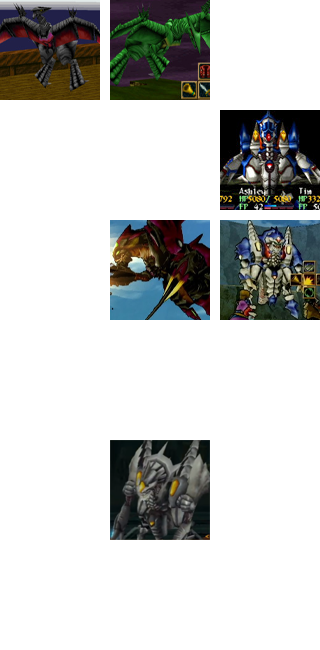
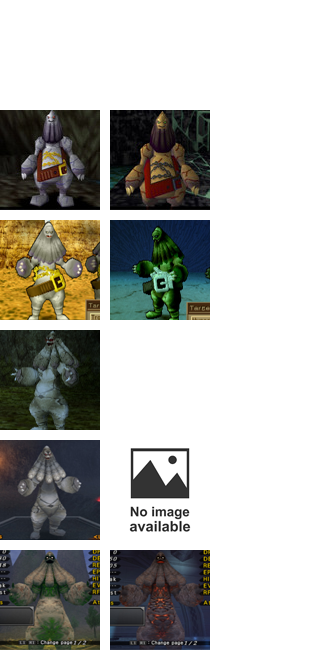
I meant to keep the horror theme going but I dropped the ball. Have a random diversion
HELLDIVER so funny enough, the "Helldiver" was a nickname for a series of dive bomber airplanes made and used between the 1920s and 40s. Ironically it's the only member of the WYVERN family that does not turn into an airplane.
WYVERN your classic european heraldic dragon. Distinguished by its two leg and two wings, no forearms build. I like how it basically got used as the "evil dragon" name for recolors of Lombardia.
LOMBARDIA I thought was named after the region of Italy, and wondered if it had some kind of associated dragon myth, but no. It's a Z Gundam reference. A battleship used by the Earth Federation, and noted as being the only ship of its kind ever built.
TROLL it's just a troll. Your standard big nordic rock creature. I like that unlike a lot of other pop fantasy, Wild Arms actually did make it very stone-like, although they get weirdly more naked as the franchise goes on.
HYPERION was a mythic Greek Titan associated with light and the sun, father of the perhaps better known sun deity, Helios. As a character model for a primordial giant deity, I guess I sorta get the use of the Troll model, but the coloration feels confusing at least until WA5 goes for this neat volcanic rock look.

3 notes
·
View notes
Text
Some stuff about the 9 Tribes of Alfheim Fashions in general :
. Elves on the Vale :
- Literally dress smth out of LOTR and Legend of Zelda
- Has several Nordic, Celtic, Iberian and Byzantine elements
- Solar and woodland related fashion elements are present
- BURSTS. OF. COLORS
. Sea Elves :
- Literally they all dress in variations of a mix of Nordic and Sea fantasy elements, really
- They go from dressing flowing, sometimes even semi sheer garments, to just wearing a tank top and several pretty accessories ( for merfolk residents of Alfheim )
- SCREAMING OCEAN CORE AESTHETICS, Y'ALL
. Pleasure Elves :
- Dress regularly like it's some masquerade party on the reg
- Colorful masks are VERY POPULAR amongst the pleasures
- Has several inspos from Medieval/Renaissance Italian and Spanish fashions, Byzantine fashions and also Nordic fashions
- Also generally VERY COLORFUL STYLES, and also BOLD MAKEUP IS VERY POPULAR FOR THEM
- Oh and also TEMPORARY DYED HAIR AND HAIR HIGHLIGHTS
. Air Elves :
- Regularly dress like smth akin to the Fast Flying Fairies in Pixie Hollow, and Medieval/Renaissance European tinker related style fashions
- Breezy and practical fashions are generally popular amongst the Air Elves
- Wind related accessories and cloth patterns
- BRAIDS AND WAR PAINTS ON THE REG
. Spice Elves :
- Their style of dress is similar to those of the Nomadic Tribes in Olden North Africa and the Arabian Pennisula, wirh several nods from Ottoman Fashions and Medieval Middle Eastern fashions
- Literally spice, sand and fire related elements in their fashions on the reg
- GOLD ACCESSORIES ARE VERY POPULAR
- Also beautiful tattoos and cool ass makeup
. Ice Elves :
- Their style of dress is similar to those of rhe Sami People, Eskimos, Ancient Nordics and Ancient Slavic peoples
- FUR AND HOODIE CLOAKS ARE POPULAR IN THE ICE ELVES
- GORGEOUS FACE MARKS ANS ALSO EARRINGS
- BRAIDS
. Elves on the North Pole :
- Literally dress in Yuletide related elements in their styles on the reg
- COLORFUL elements, snowflake and candy related accessories
- Their styles has several nods to the Nutcracker costumes, and Christmas Elves one may hear about in Yuletide legends
- COLORFUL hats and masks, and stylish shoes
. Moon Elves :
- Literally dress smth akin to the mystical priests and priestesses in Pre Medieval and Medieval Era Europe
- Flowing robes, Hoodie cloaks, gorgeous face markings, braids all that
- Their styles has several nods to Nordic Volva styles, Ancient Nordic, Ancient Celtic and Ancient Slavic styles
- Veils and Shawls are very popular amongst the Moon Elves too
🤯🤯🤯🤯🤯
. Cat Elves :
- Literally dress in styles akin to the Animal Fairies in Pixie Hollow and also mountainous nomadic peoples in Nordic, South Asian, Slavic, Balkan and Middle Eastern peoples on the reg
- Their styles has several nods to the mountain nomadic peoples in the Nordic mountainous, Himalayas, Persian Mountains, and Balkan mountain regions
- Fur, boots and leather are popular amongst the cat Elves
- Braids ( YES THE LIGHT FAE IN THE NINE REALMS LOVE THEM THEIR BRAIDS ), paint markings and mountain nomadic related accessories
#ice elves#sea elves#elves on the vale#pleasure elves#alfheim hcs#mcu#light elves#light fae#spice elves#cat elves#moon elves#elves on the north pole#air elves
4 notes
·
View notes
Text
Hadjet
Heyo I'm hopefully back to posting. Mental health stuff and other things. Changed my meds and feel much more motivated now so maybe I'll be bach to posting. So let's start with some old stuff. Pokemon Team Profiles! So let's go with the other Pokemon VIdar arrives in Reborn with, Halogi!

"She's beautiful, and proud of it! Meet Vidar's Talonflame, Hadjet!" Acquired: She was the mentioned Fletchling in Hervor's profile. As such she belonged to Seth, Vidar's younger brother. She was chosen for him due to Seth's dream of being a pilot/sky trainer. However after Seth's passing it ended up in Vidar's ownership. Initially Vidar was hesitant to take her with him to Reborn, but she insisted. And internally he appreciates that. As she is one of the few things he has left of his brother. Special Info/Ideas: She has always been a very beautiful Pokemon, and very vein in that regard as well. Especially being the shiny version of another region in Unova. As such she doesn't like when opponents attacks, or even just playful fellow Pokemon mess up her coat. This was especially obvious in Vidar's battle against Aya as well as the Pulse Swalot.
Evolution: Halogi's final evolution into a Talonflame was emotional to say the least. She had always been a beautiful Pokemon, and Seth often drew her as he imagined her final form would be. So Vidar was just struck with grief and nostalgia. Of how his brother would have loved to see her feathers reflected the light in such an iridescent way. He could almost picture both her and Seth flying through the skies together. The first time he flew on her he thought of how it should have been his brother who would have been the first time to fly with her. So yeah he cried. Trivia: -Hadjet was conceptualized as part of Vidar's team even before I had fleshed out his backstory, originally named Halogi. Originally she would have been caught in Beryl as it is in-game.
-You might not have noticed but Vidar's team is named after Nordic deities, including Vidar himself. However both Seth and Halogi are named after Egyptian mythology/symbolism.
This was done to show how Vidar's mother Livina, who in this canon came up with the names as part of her own stories, also influenced Seth. Though he was always more fascinated with the images her words would paint, and would try to capture them in his drawings/paintings.
6 notes
·
View notes